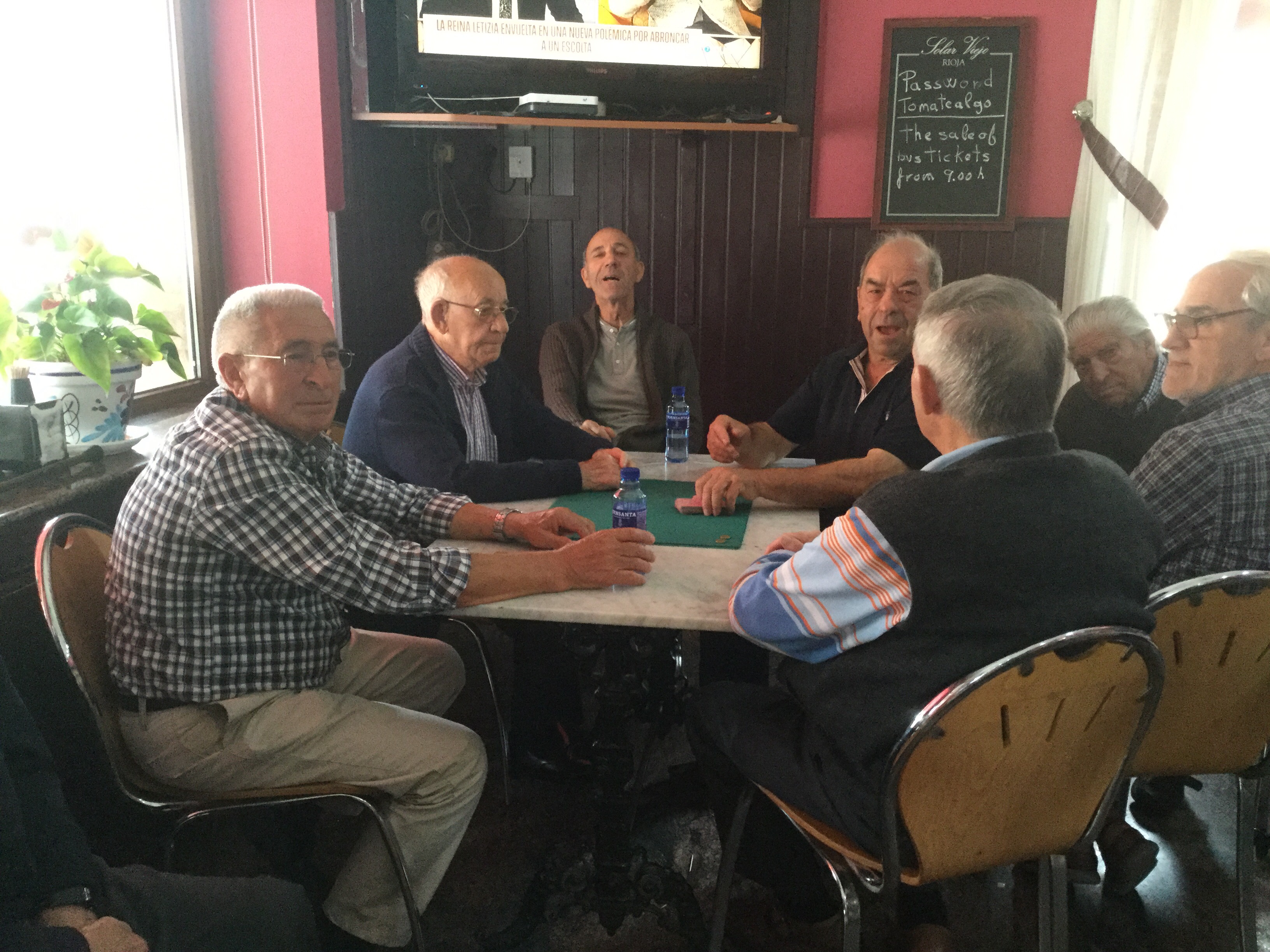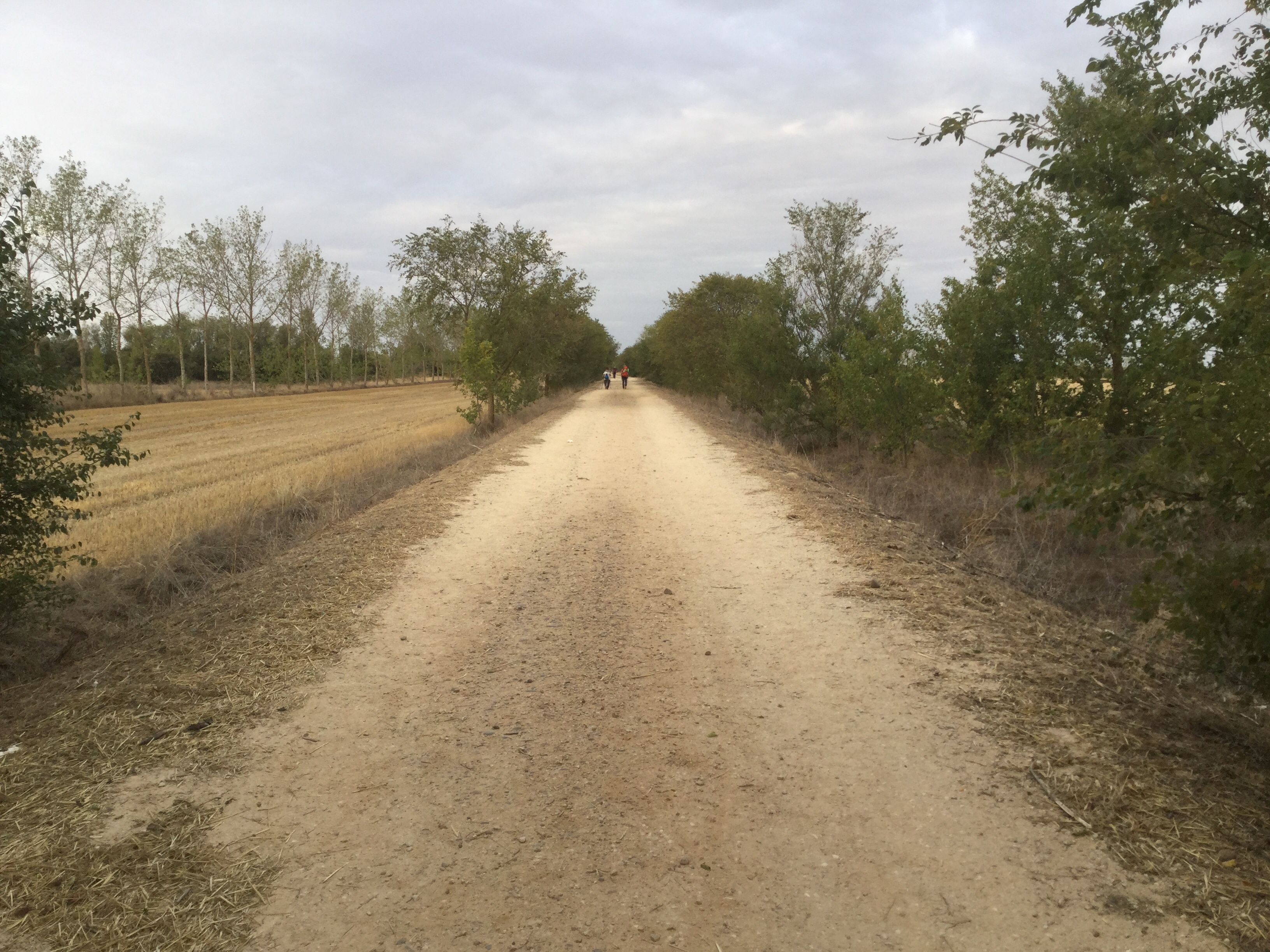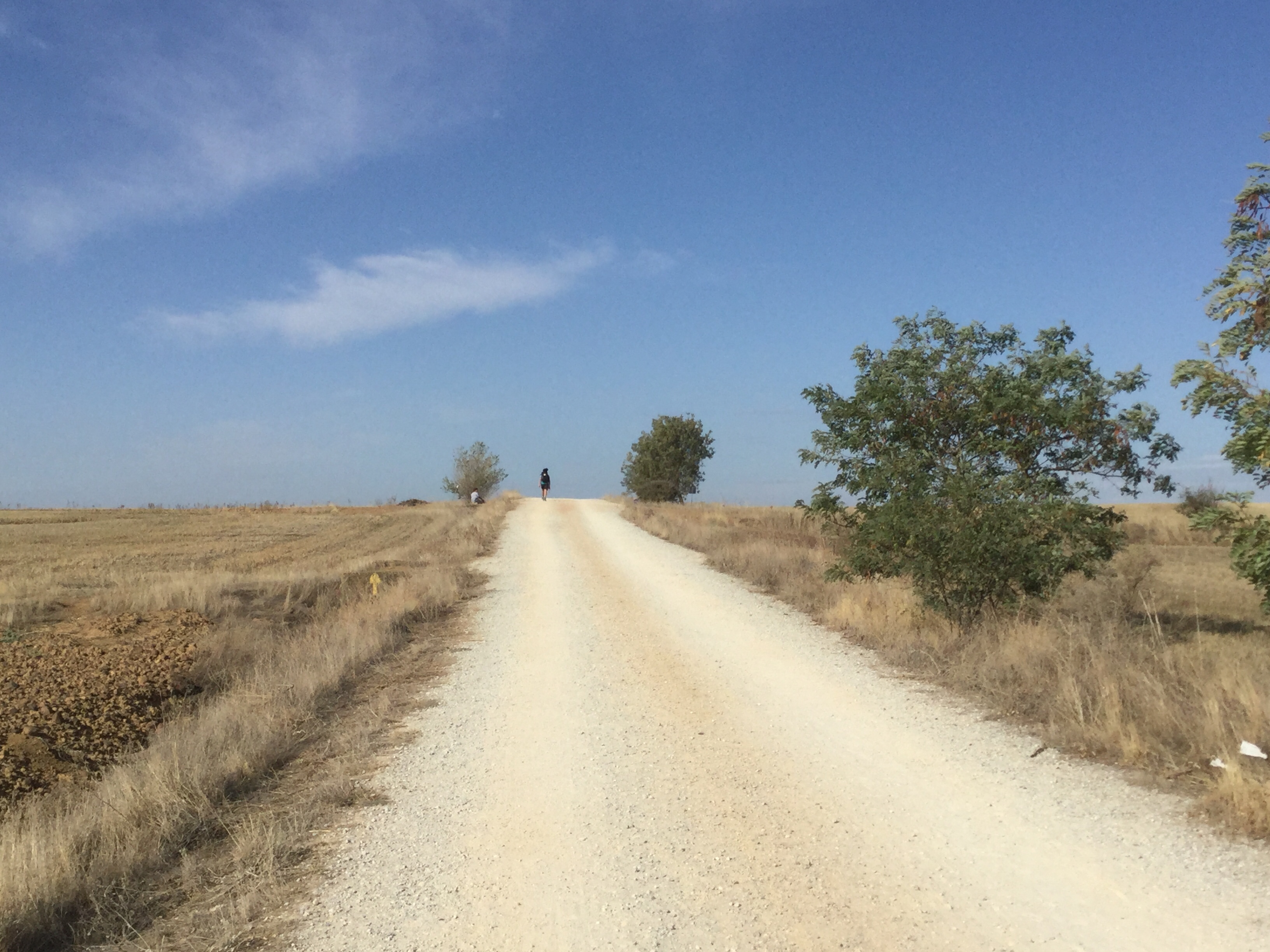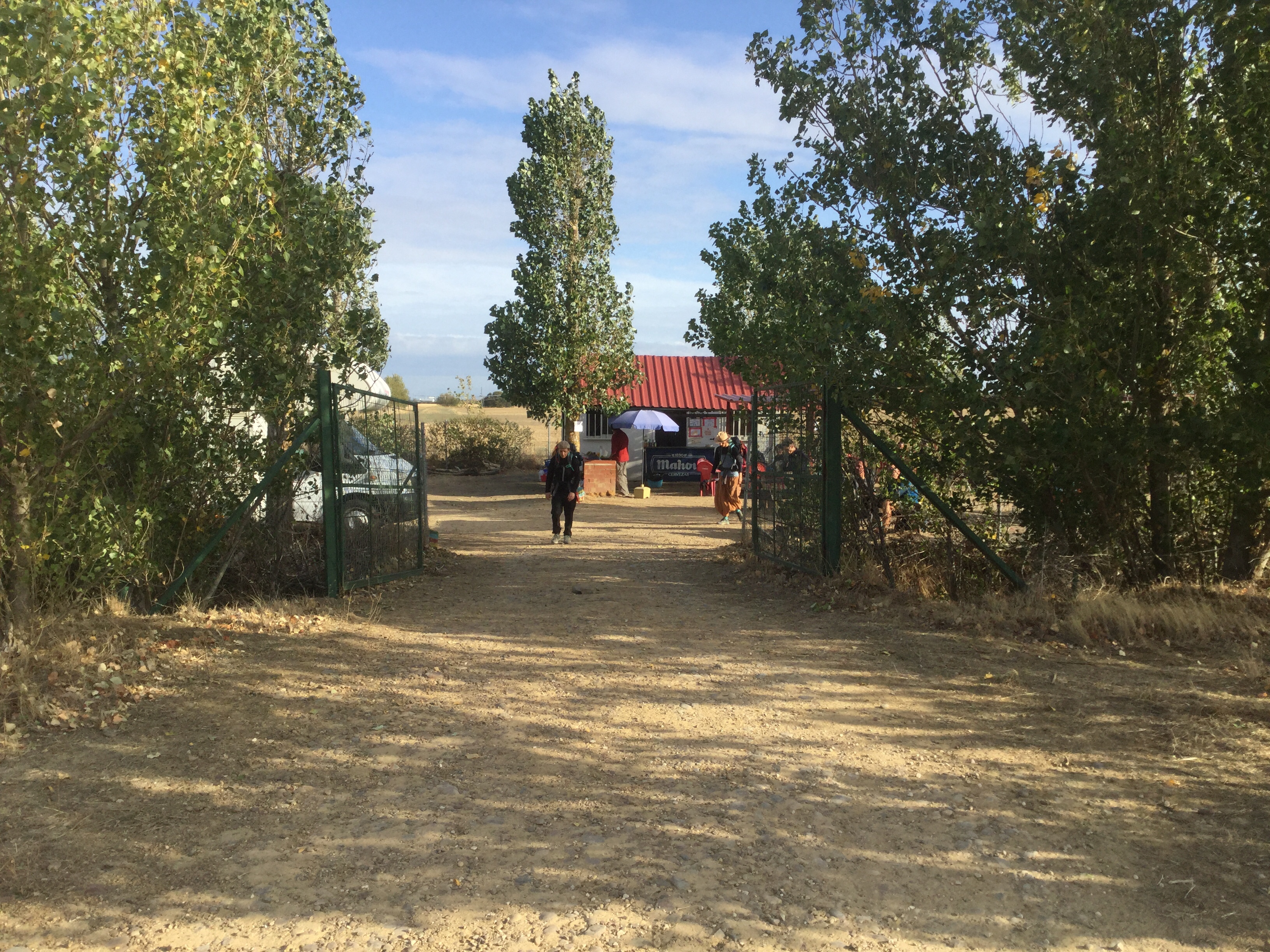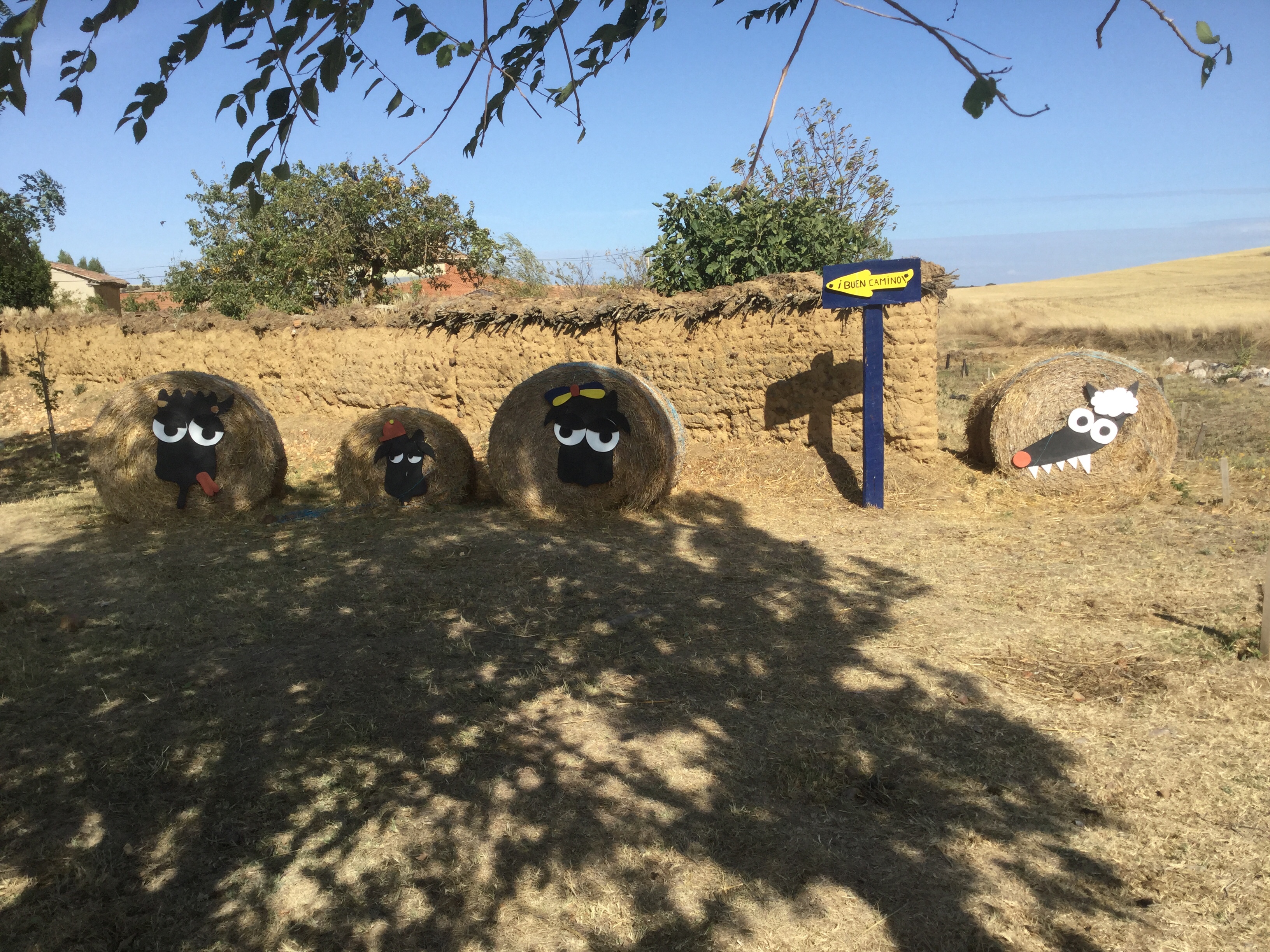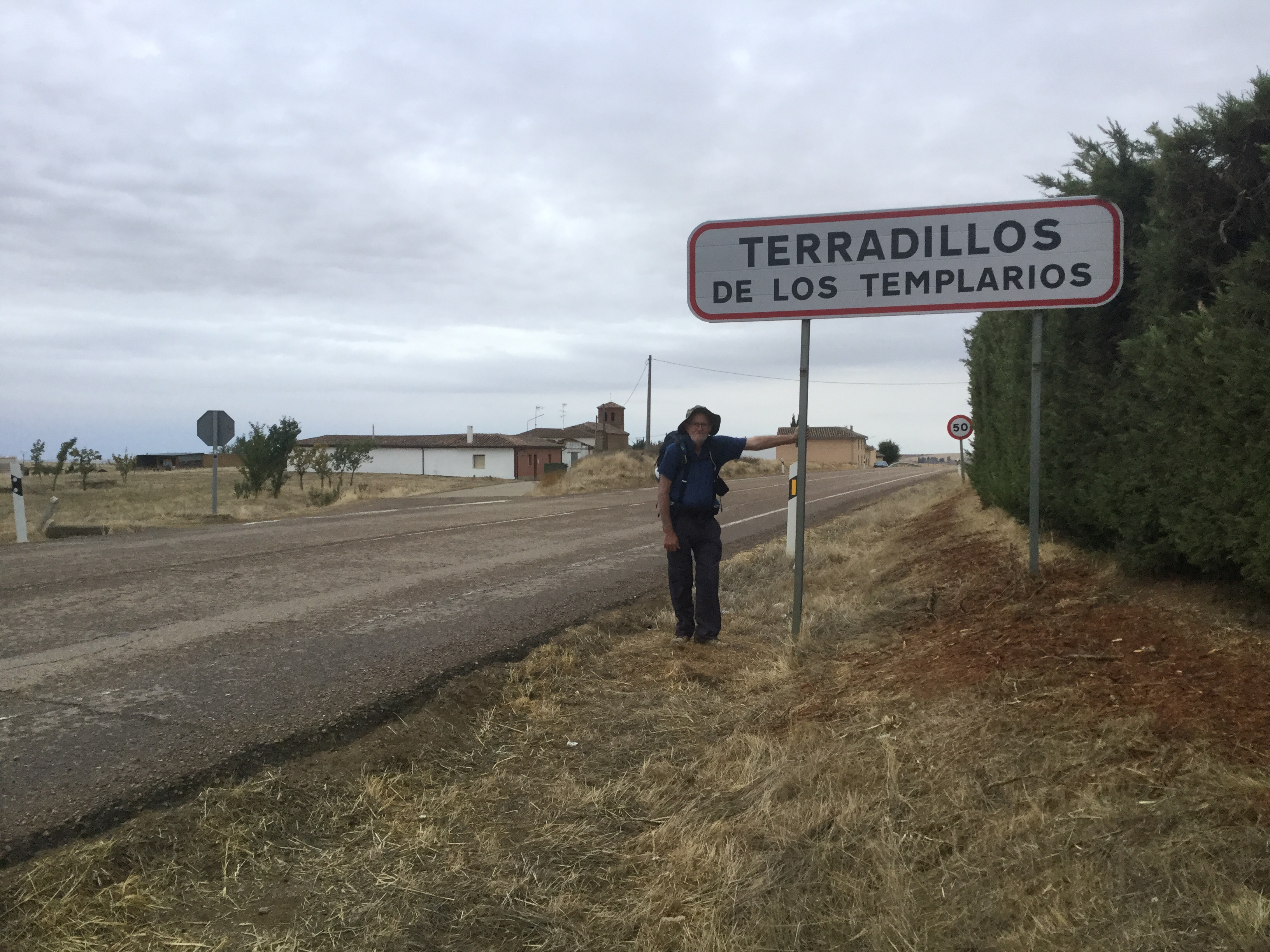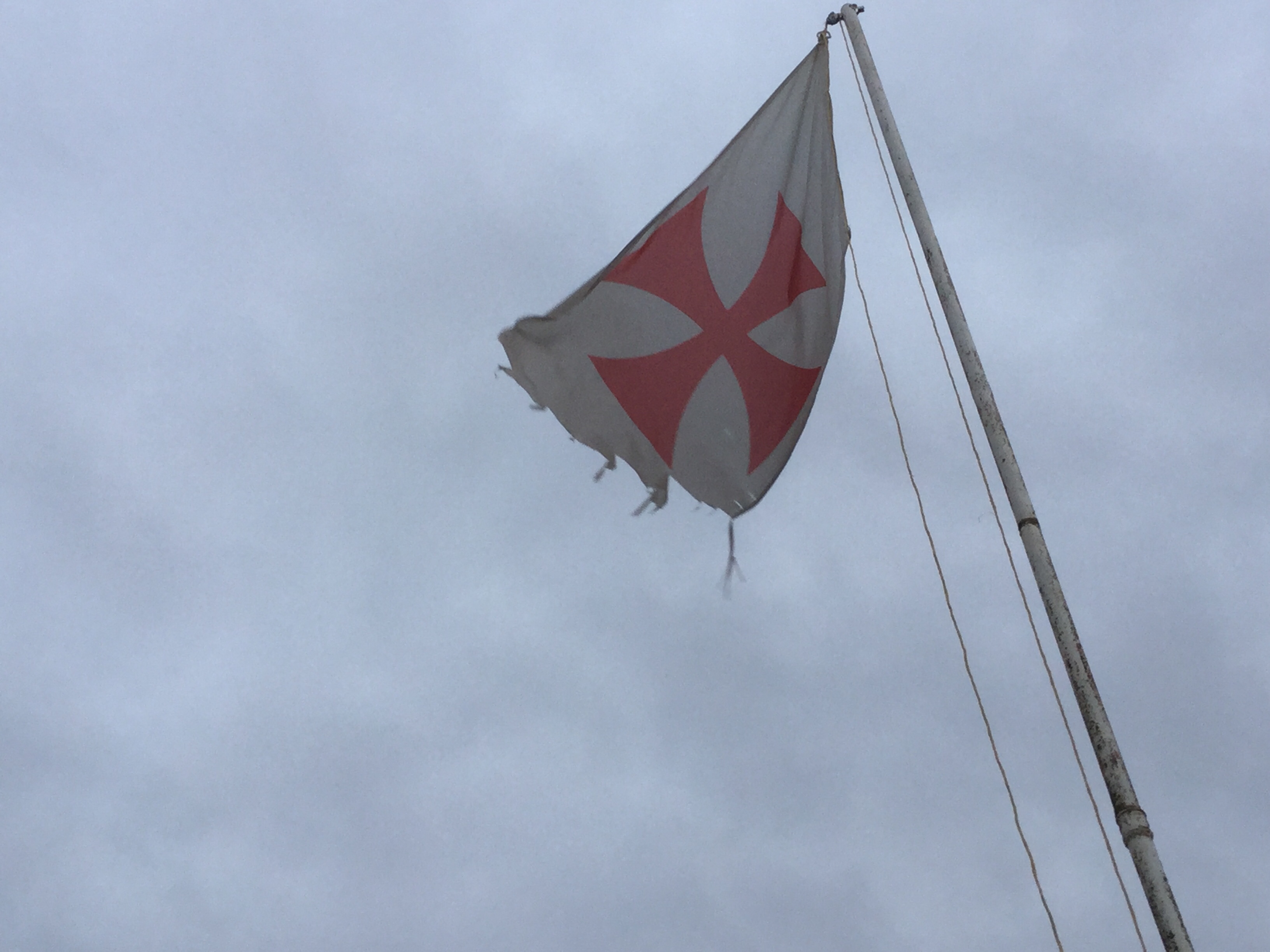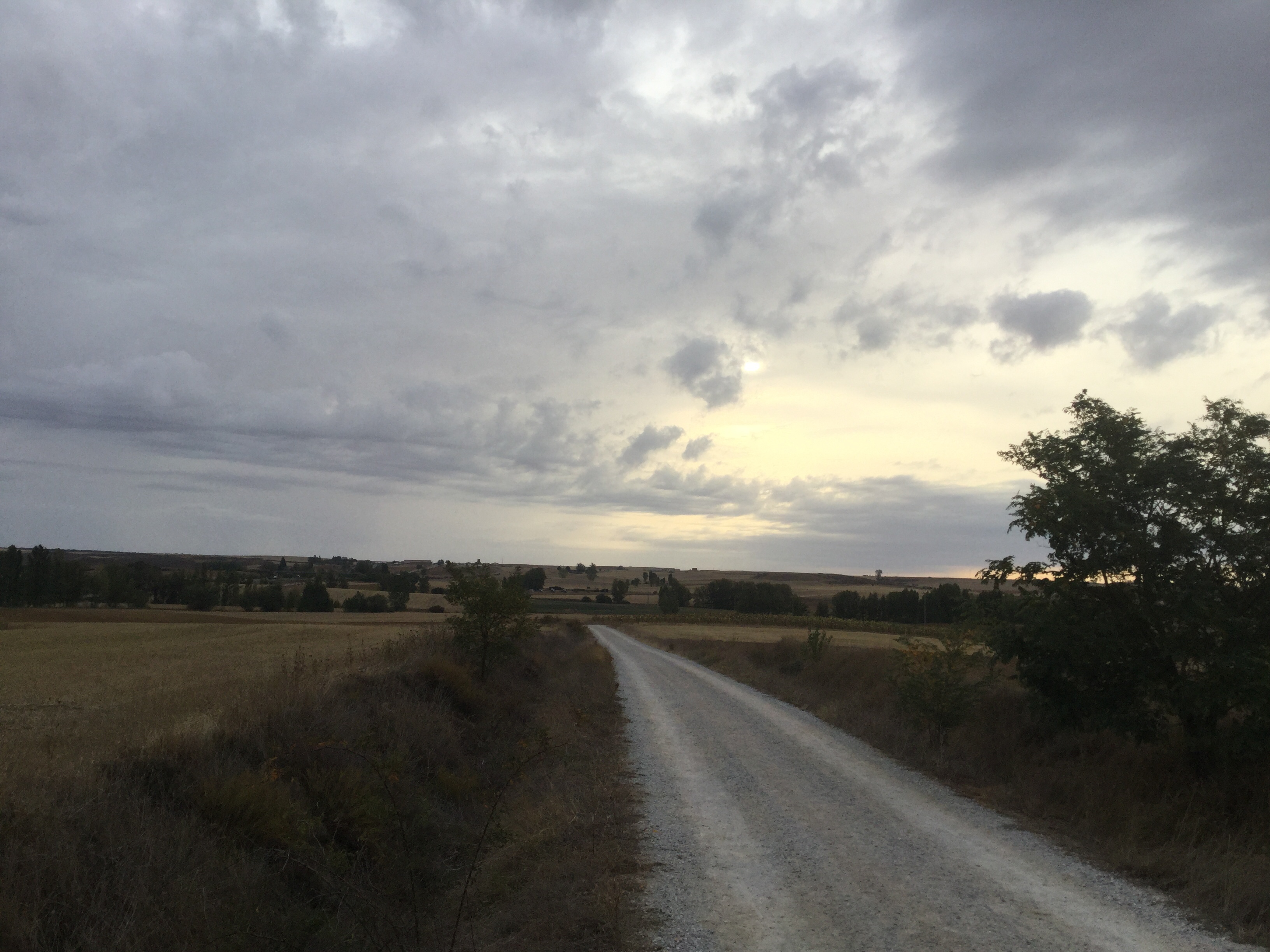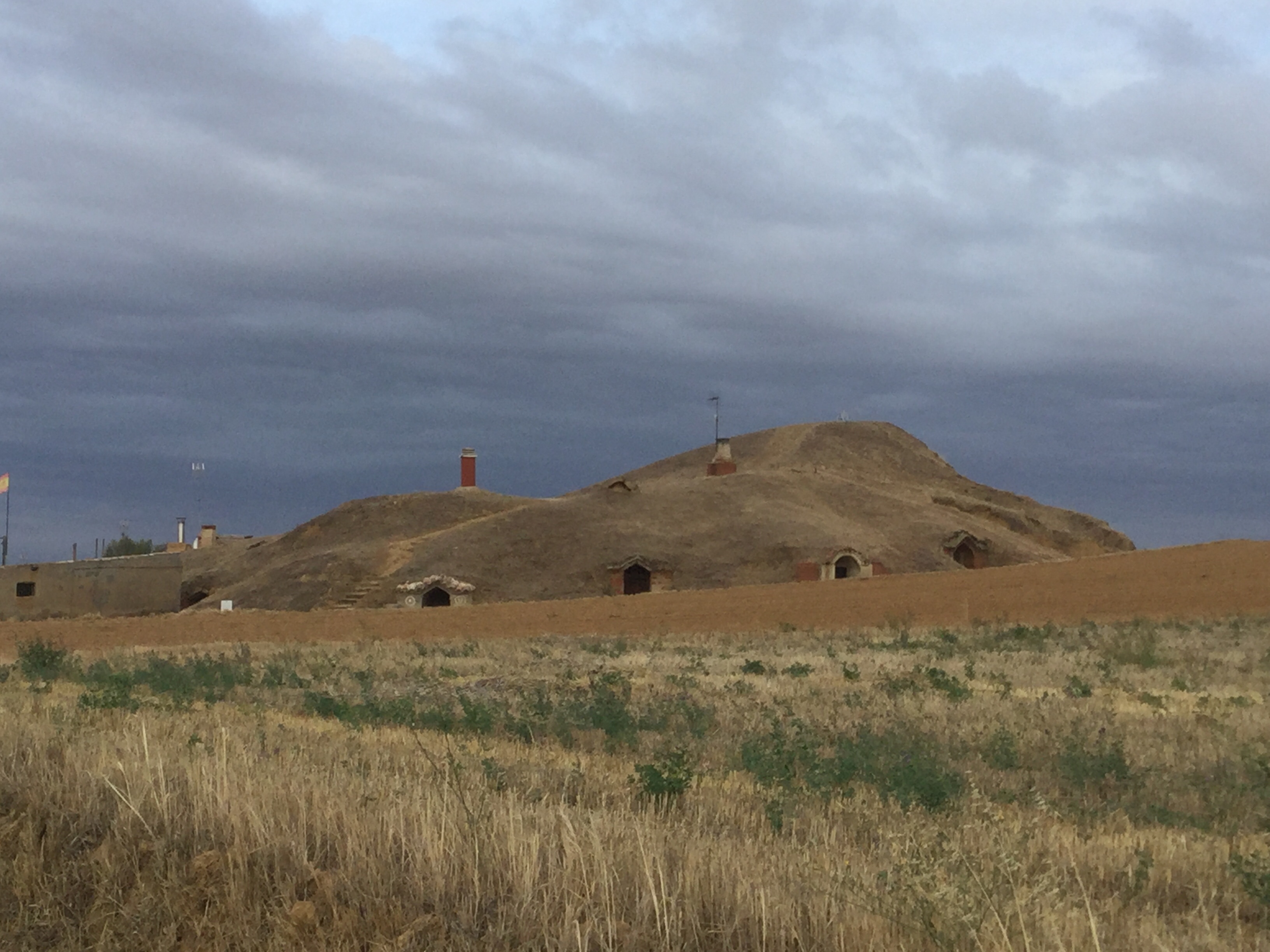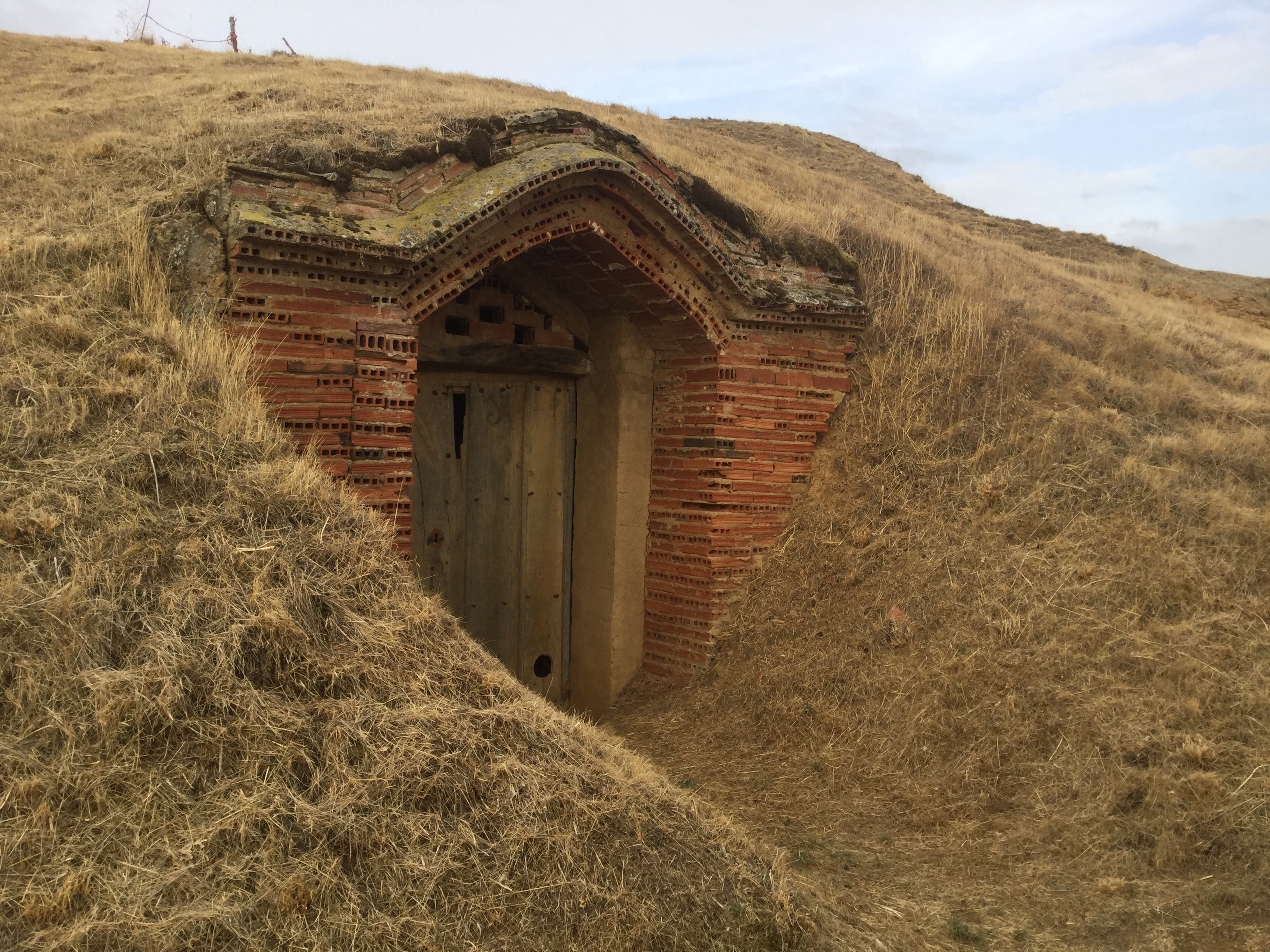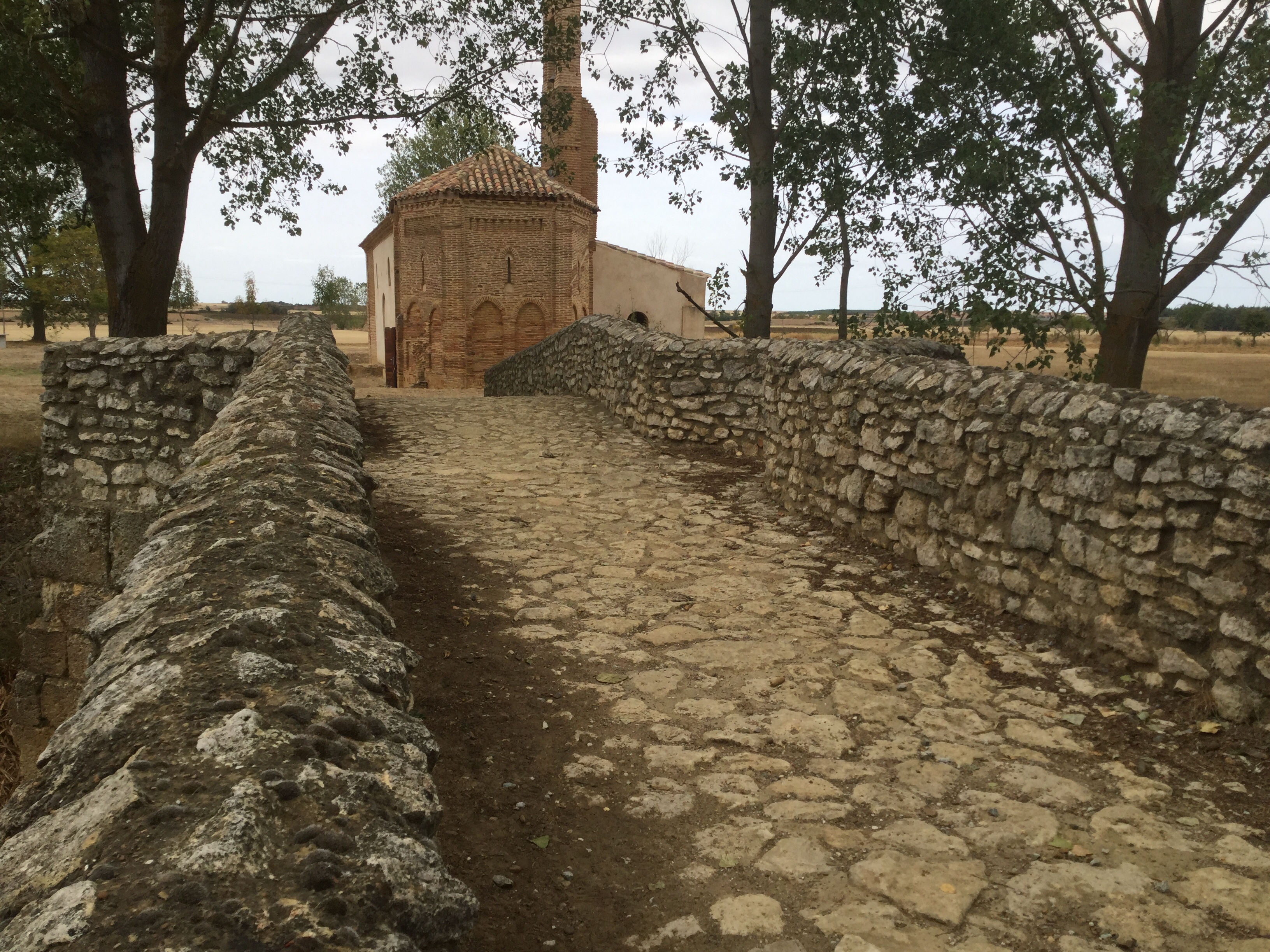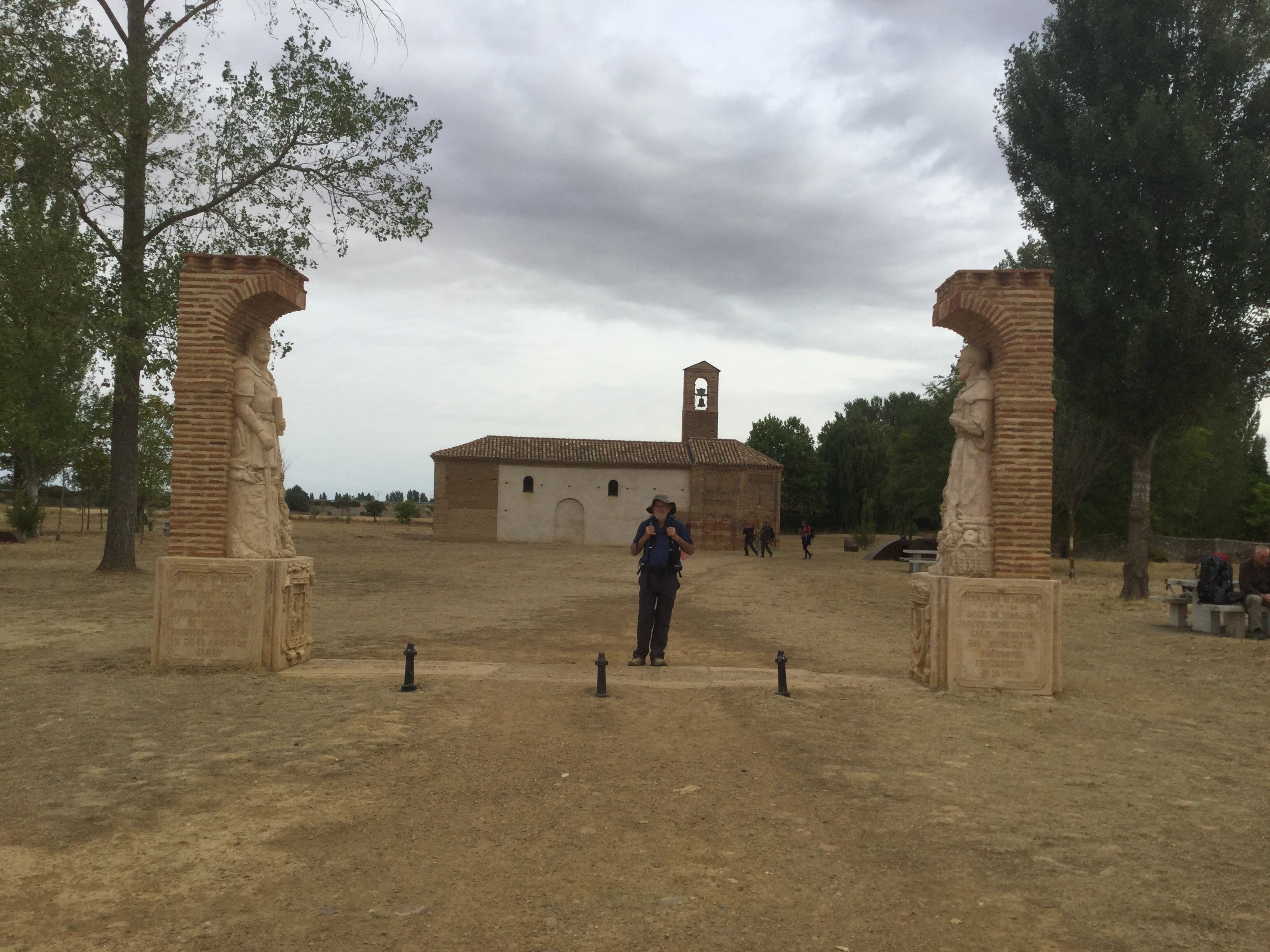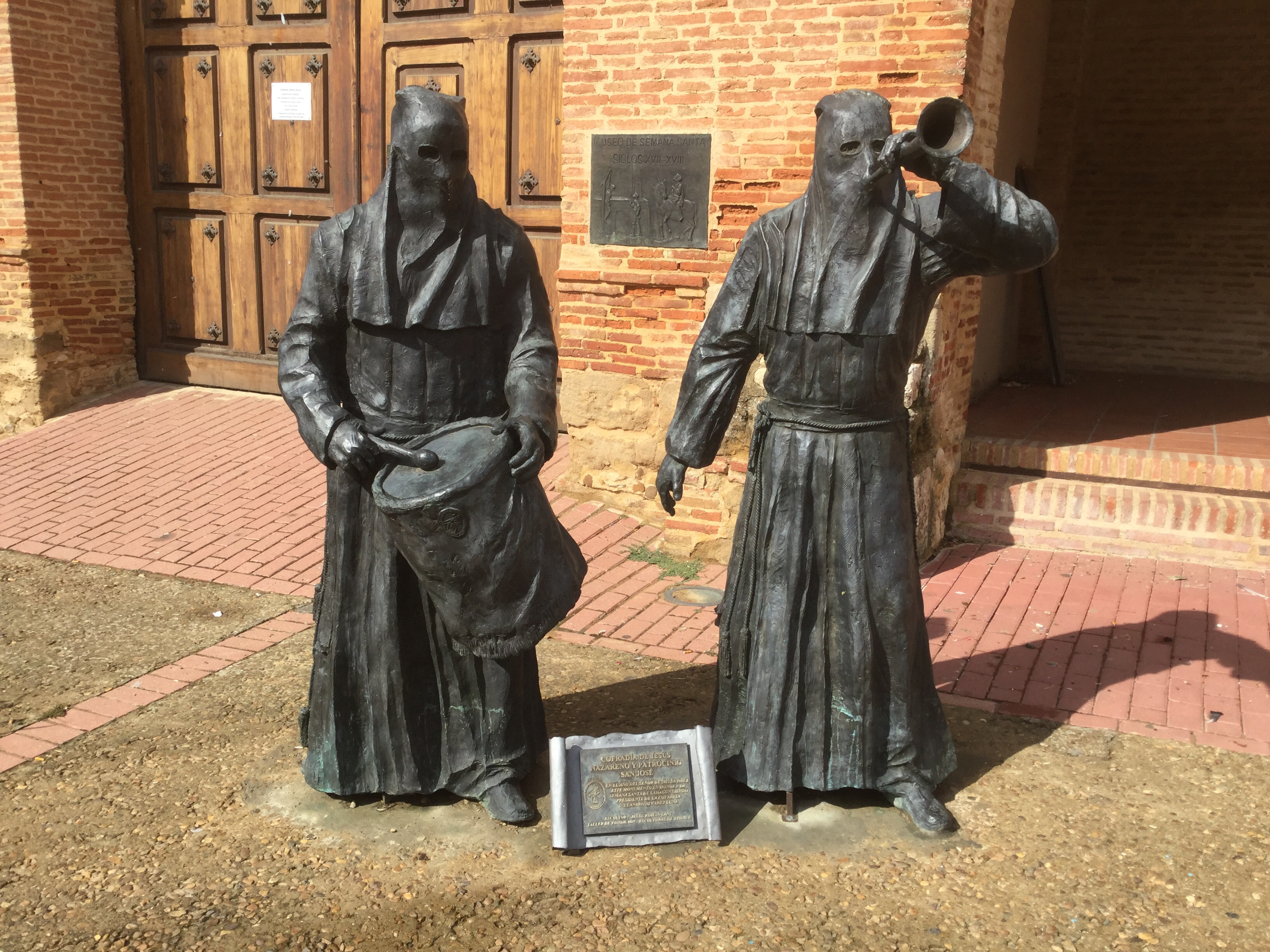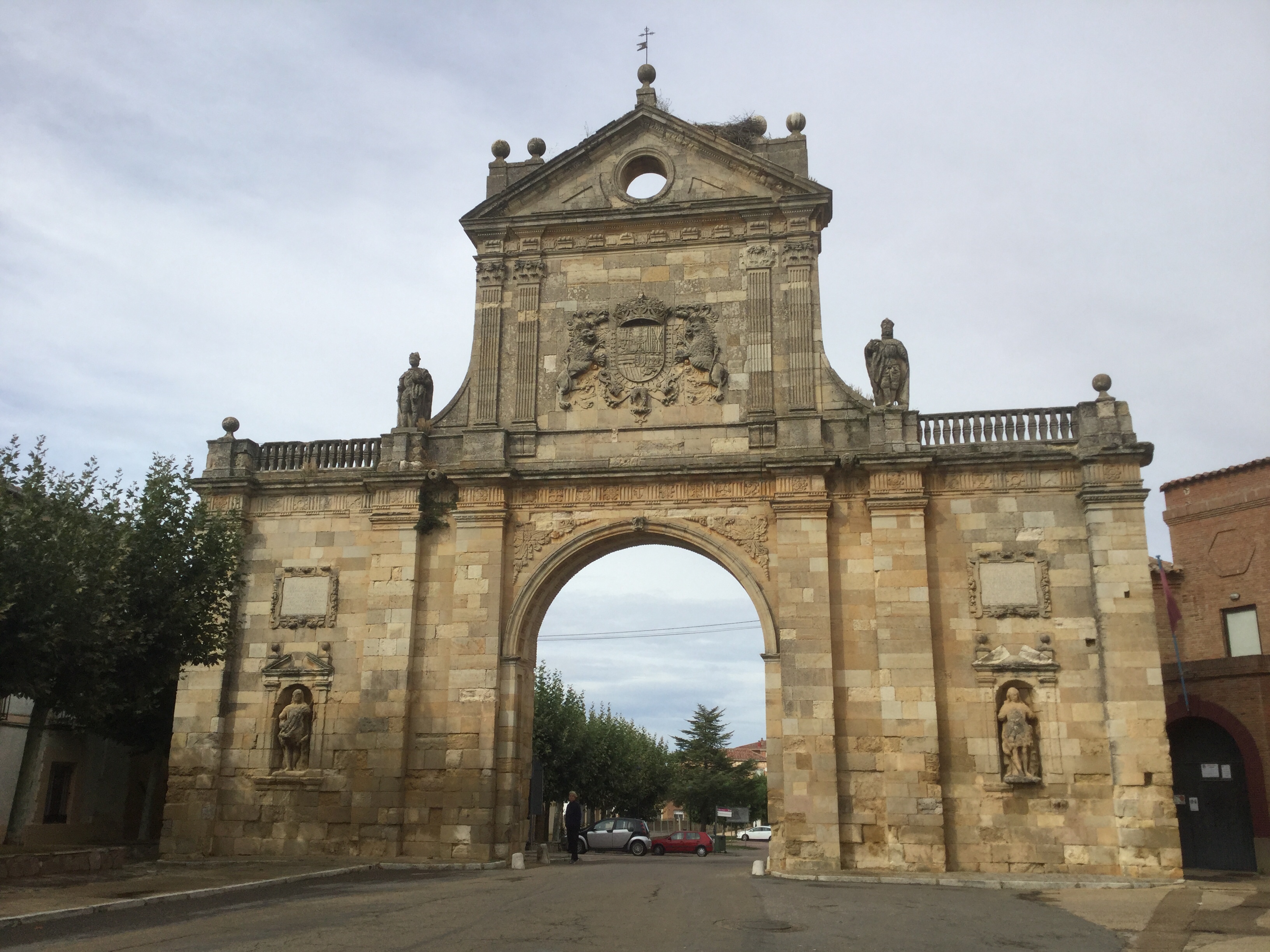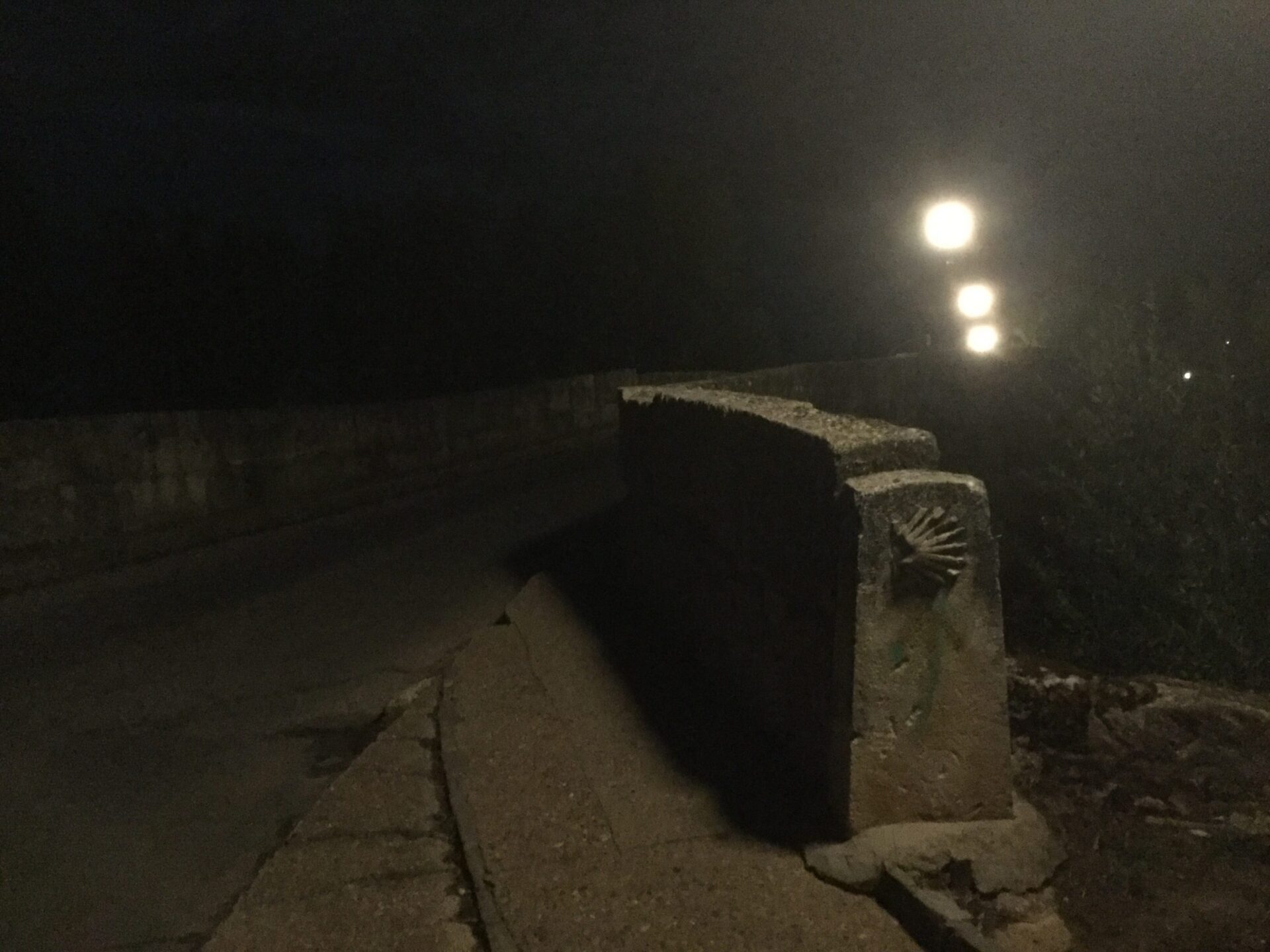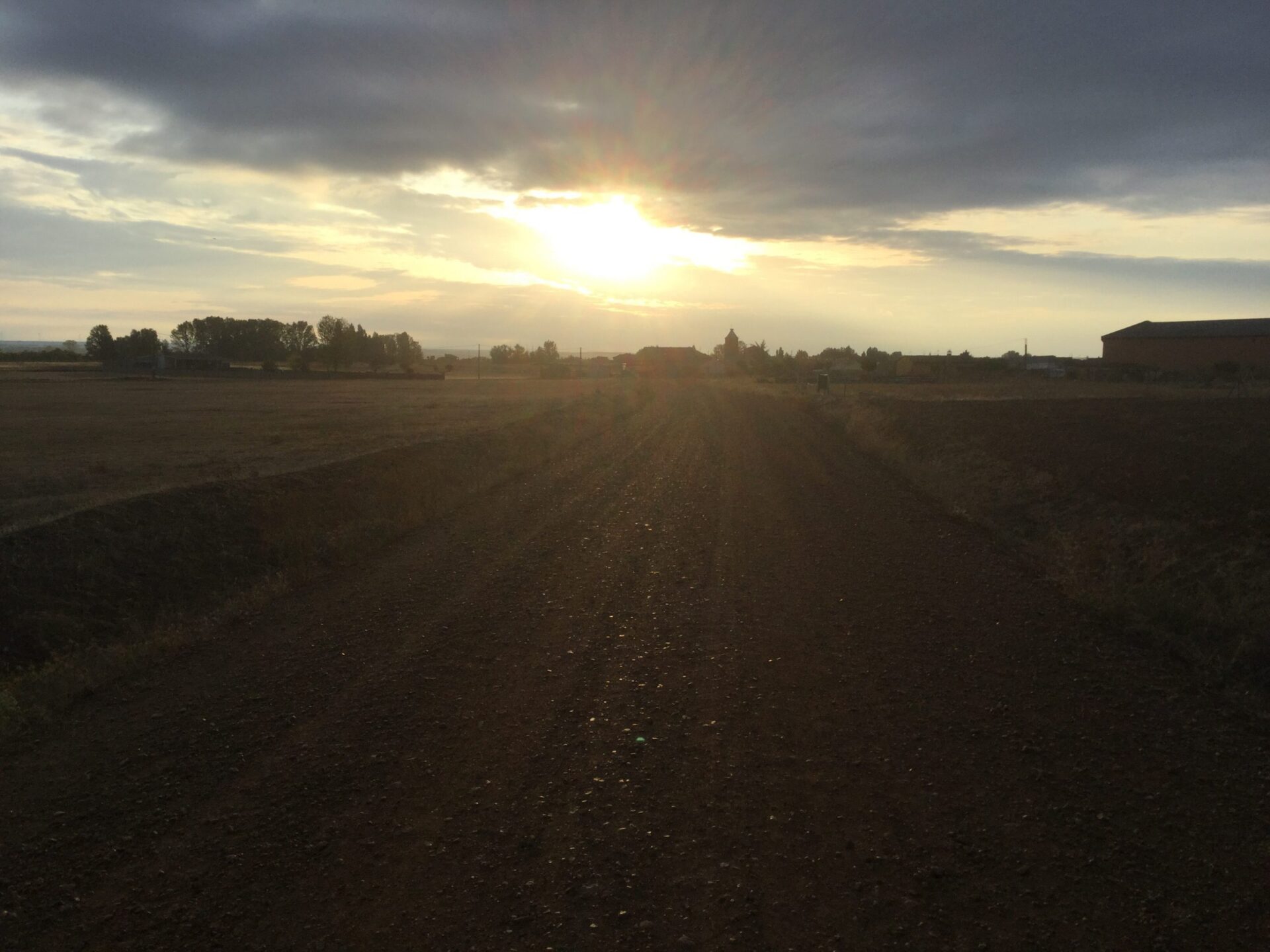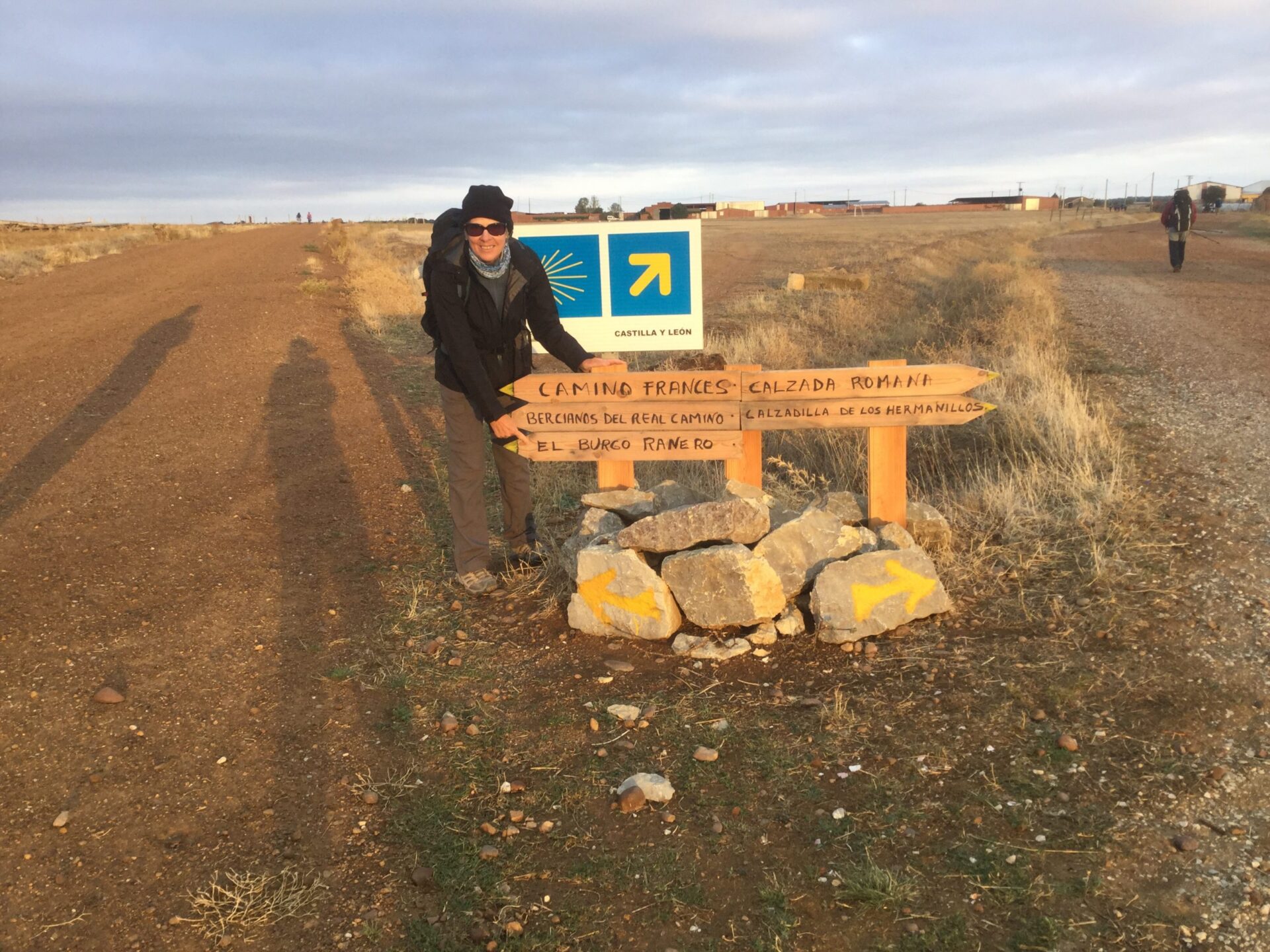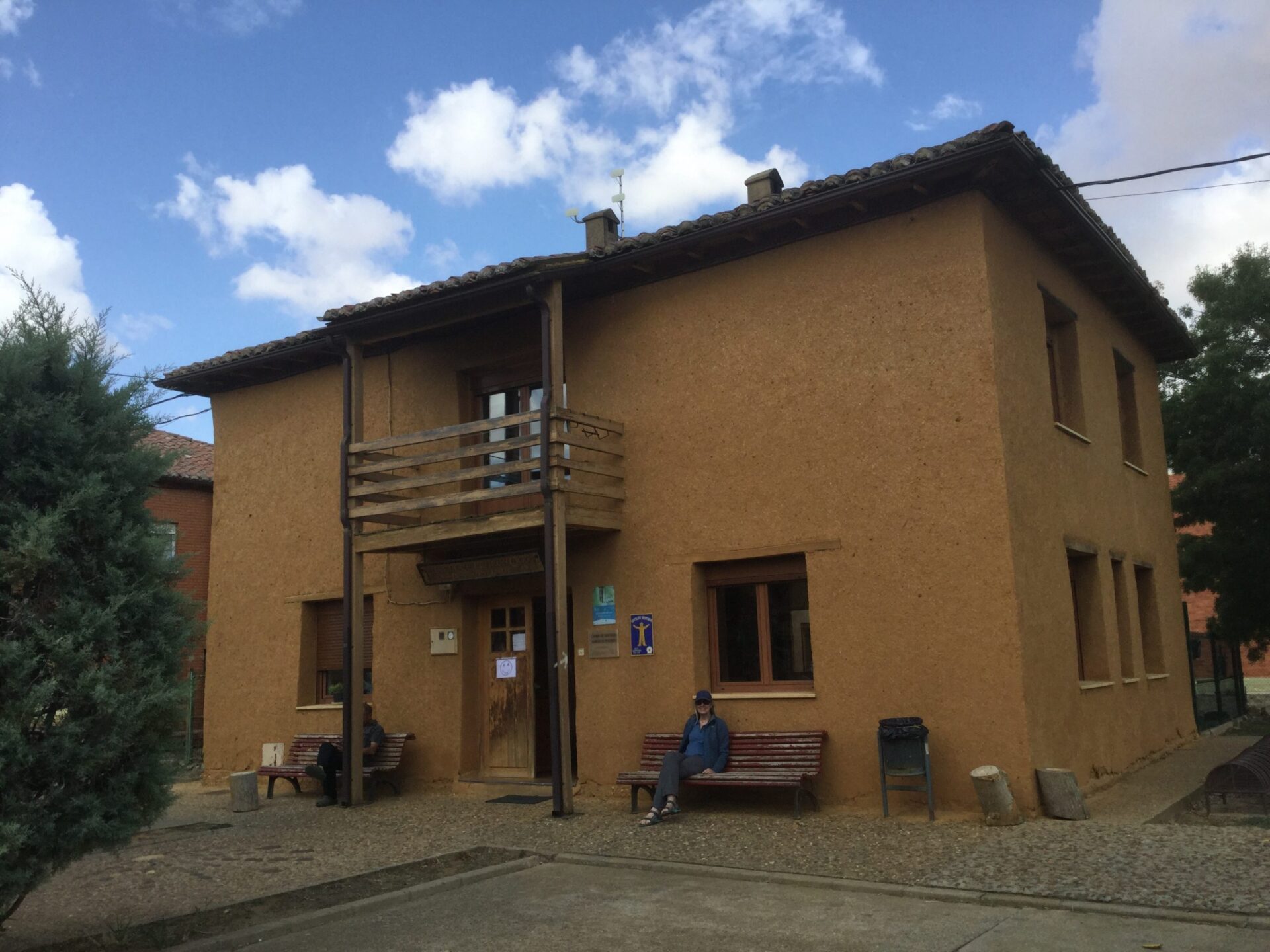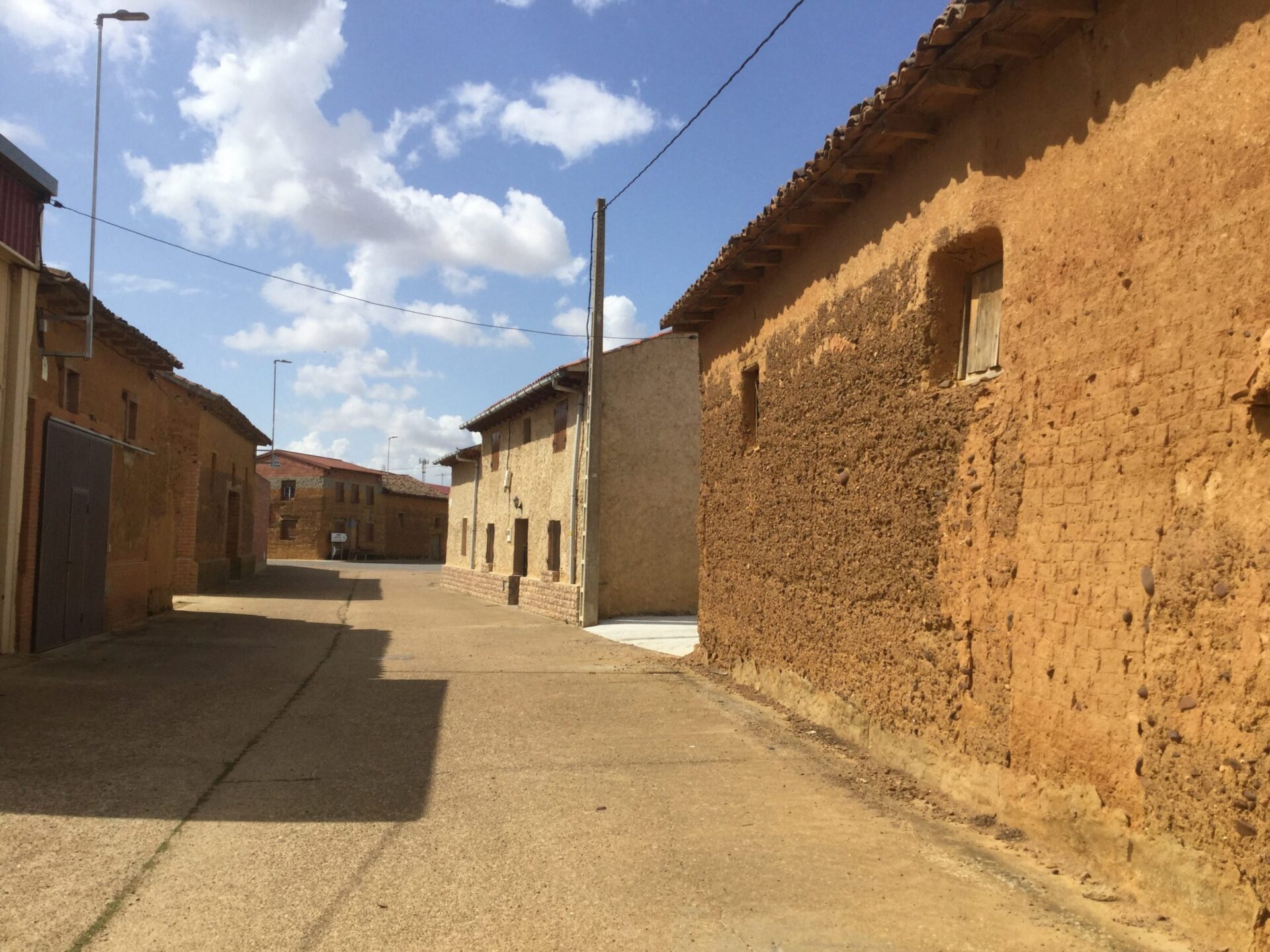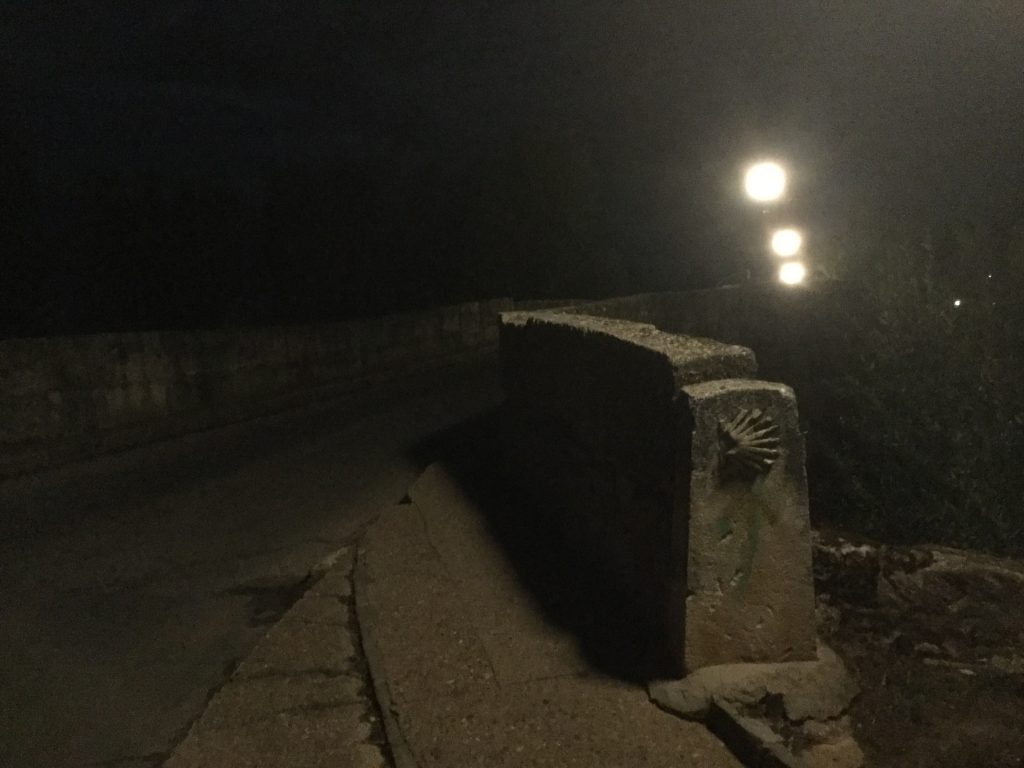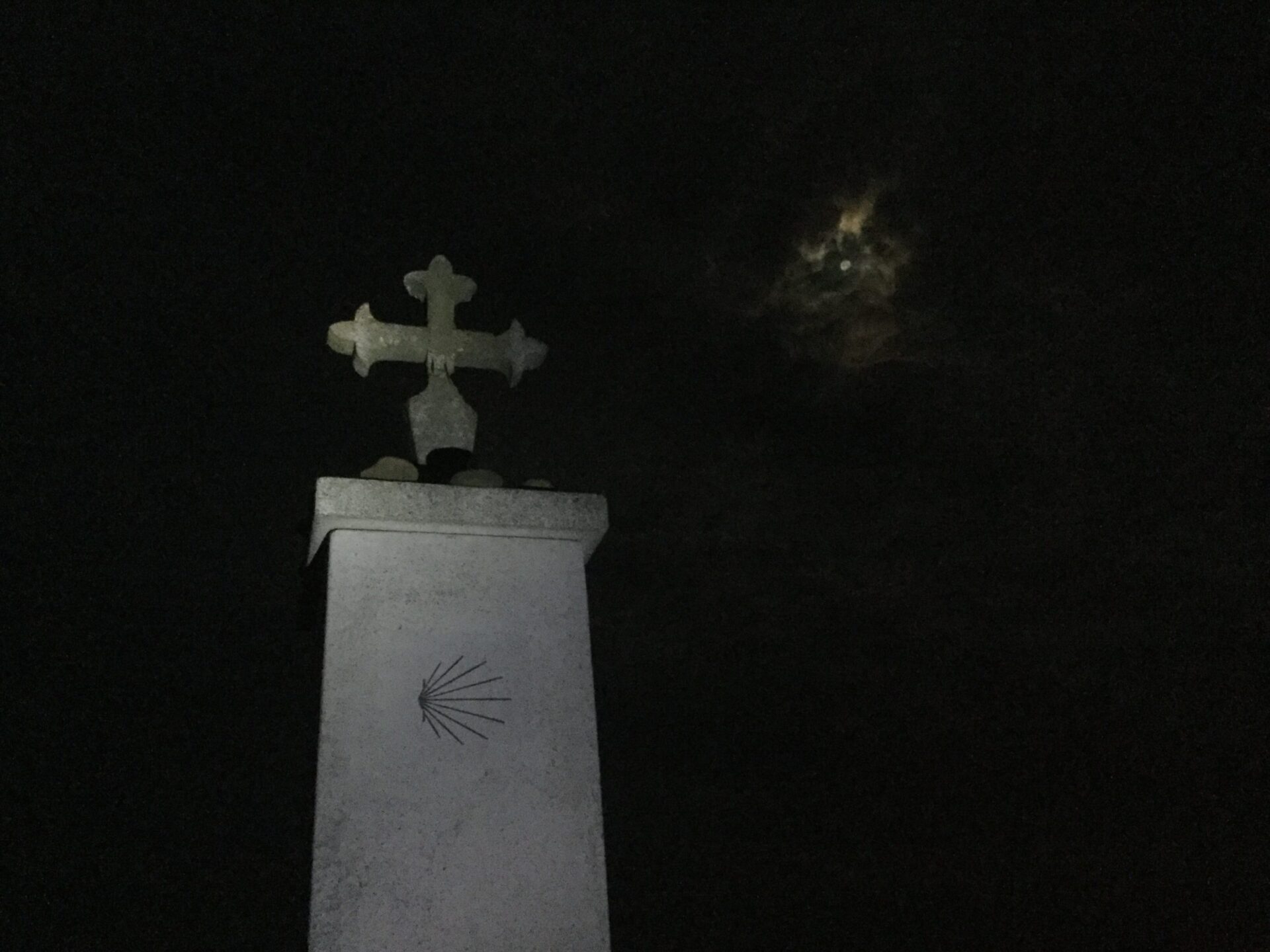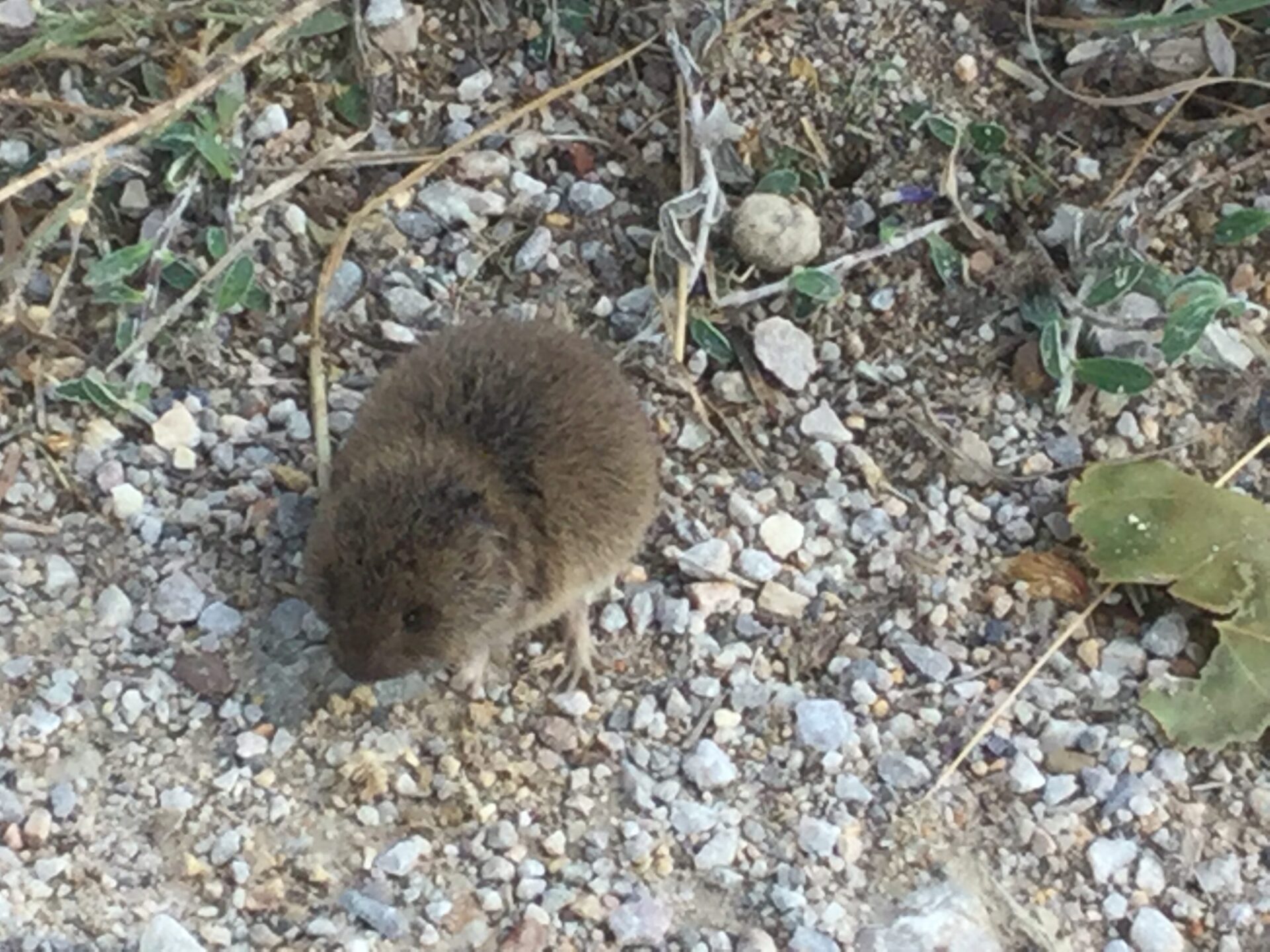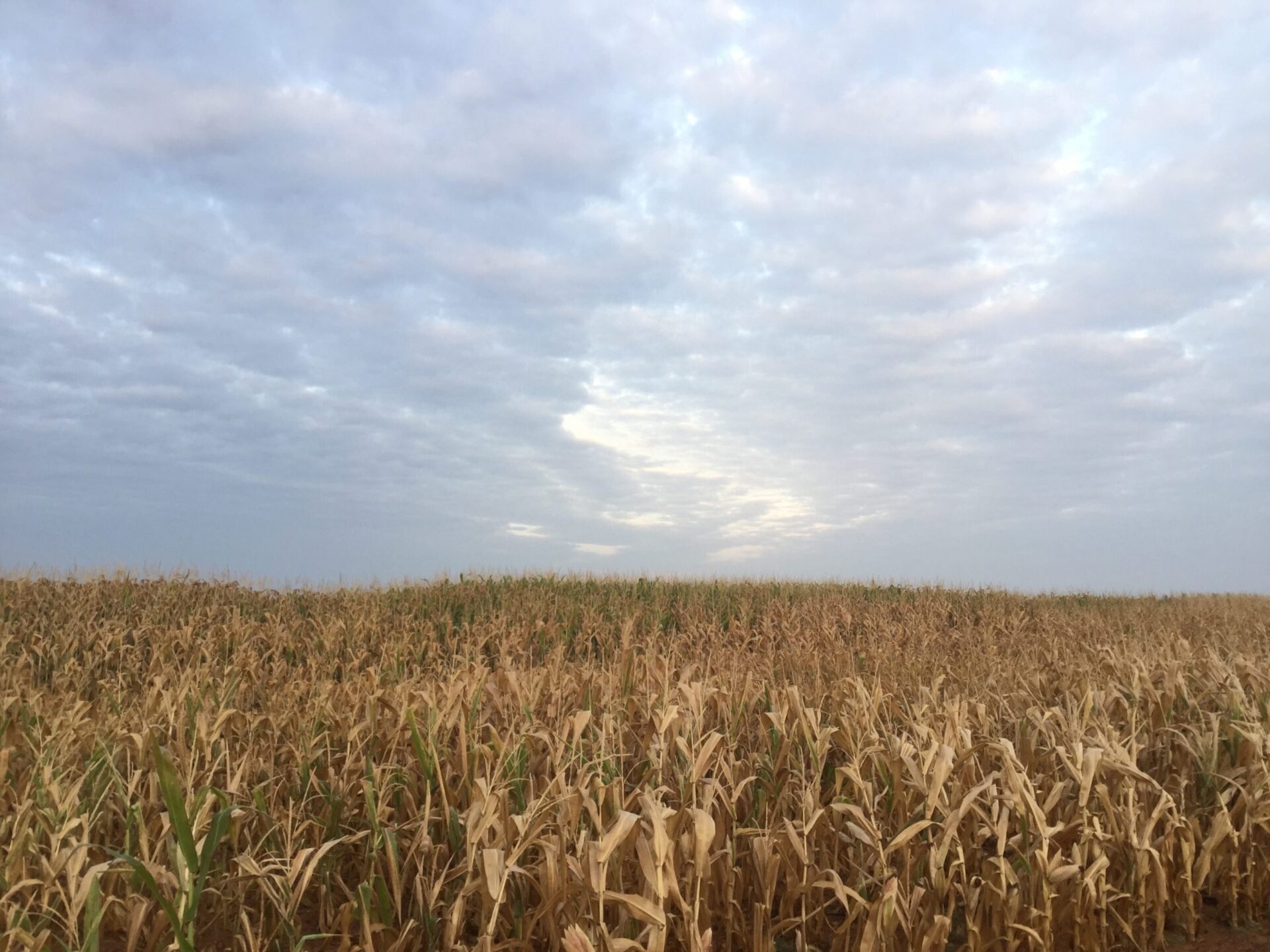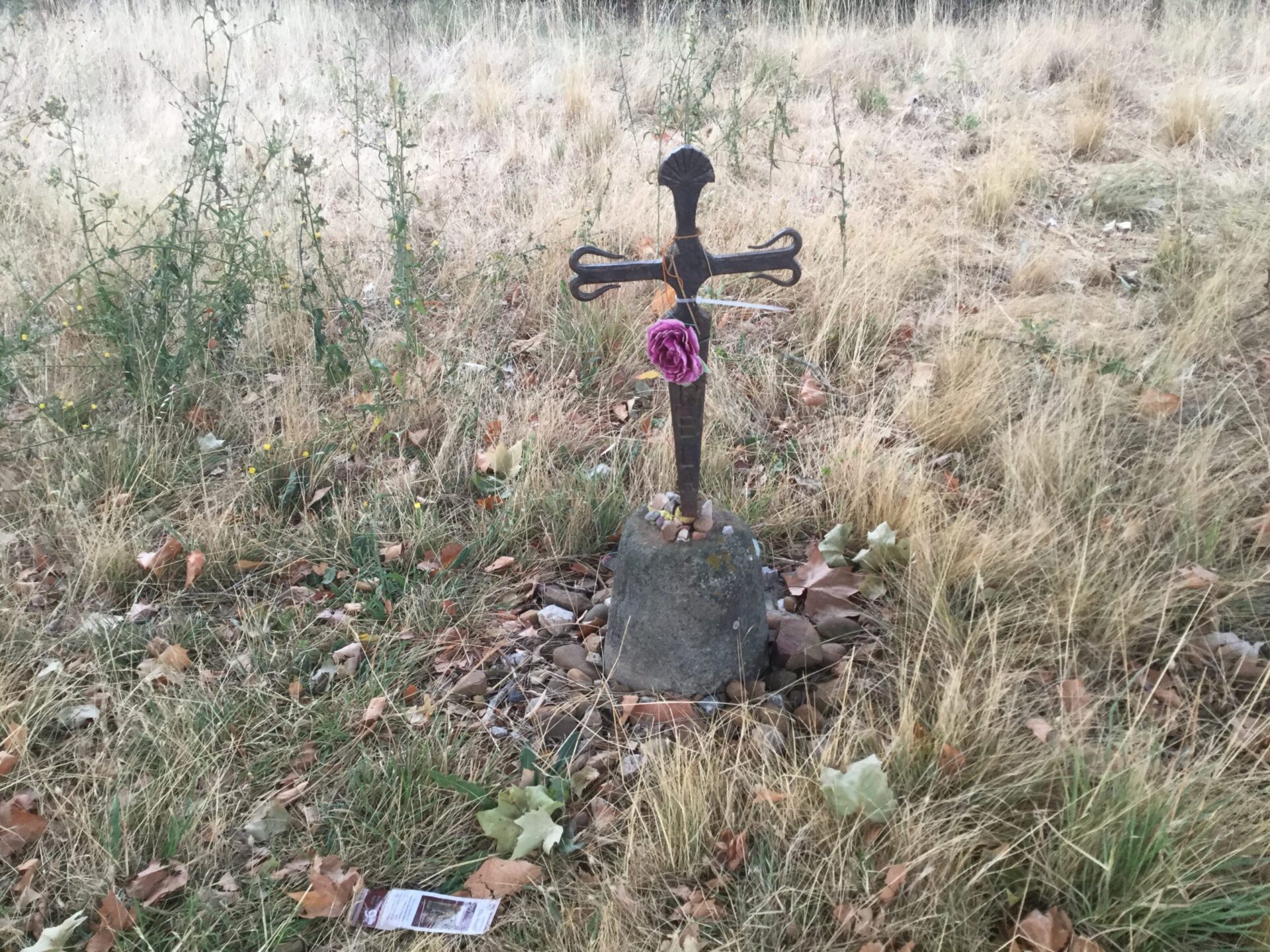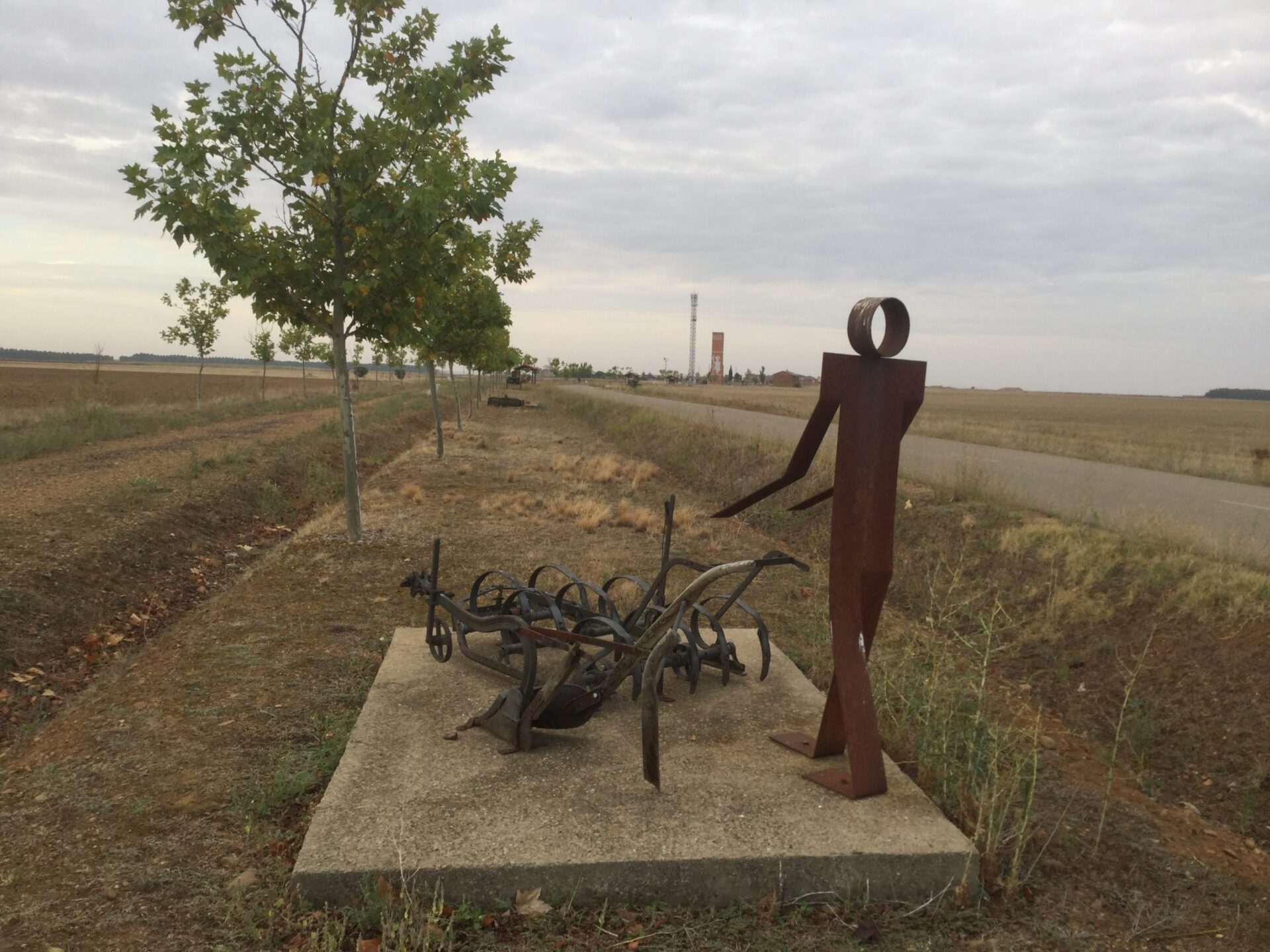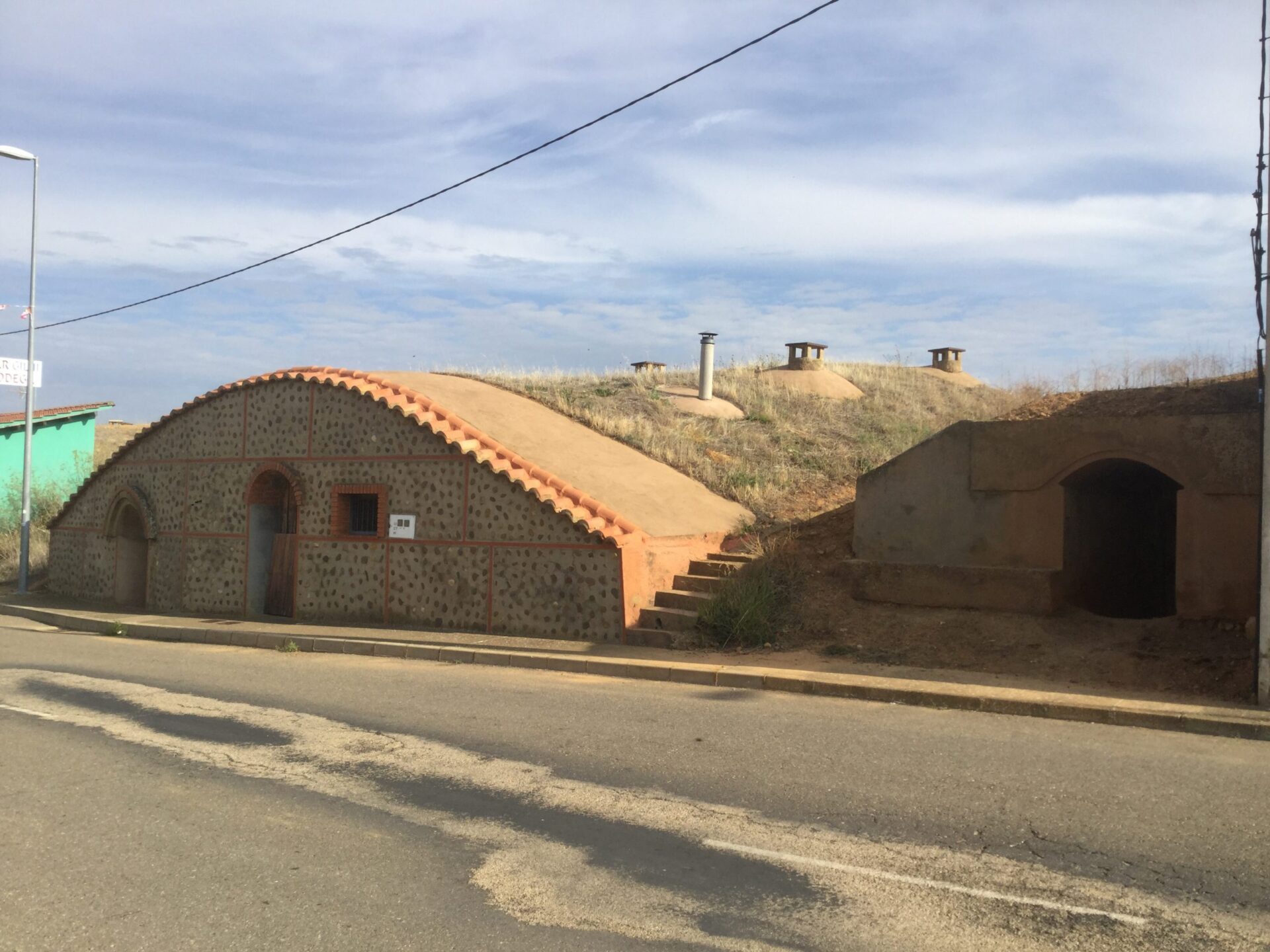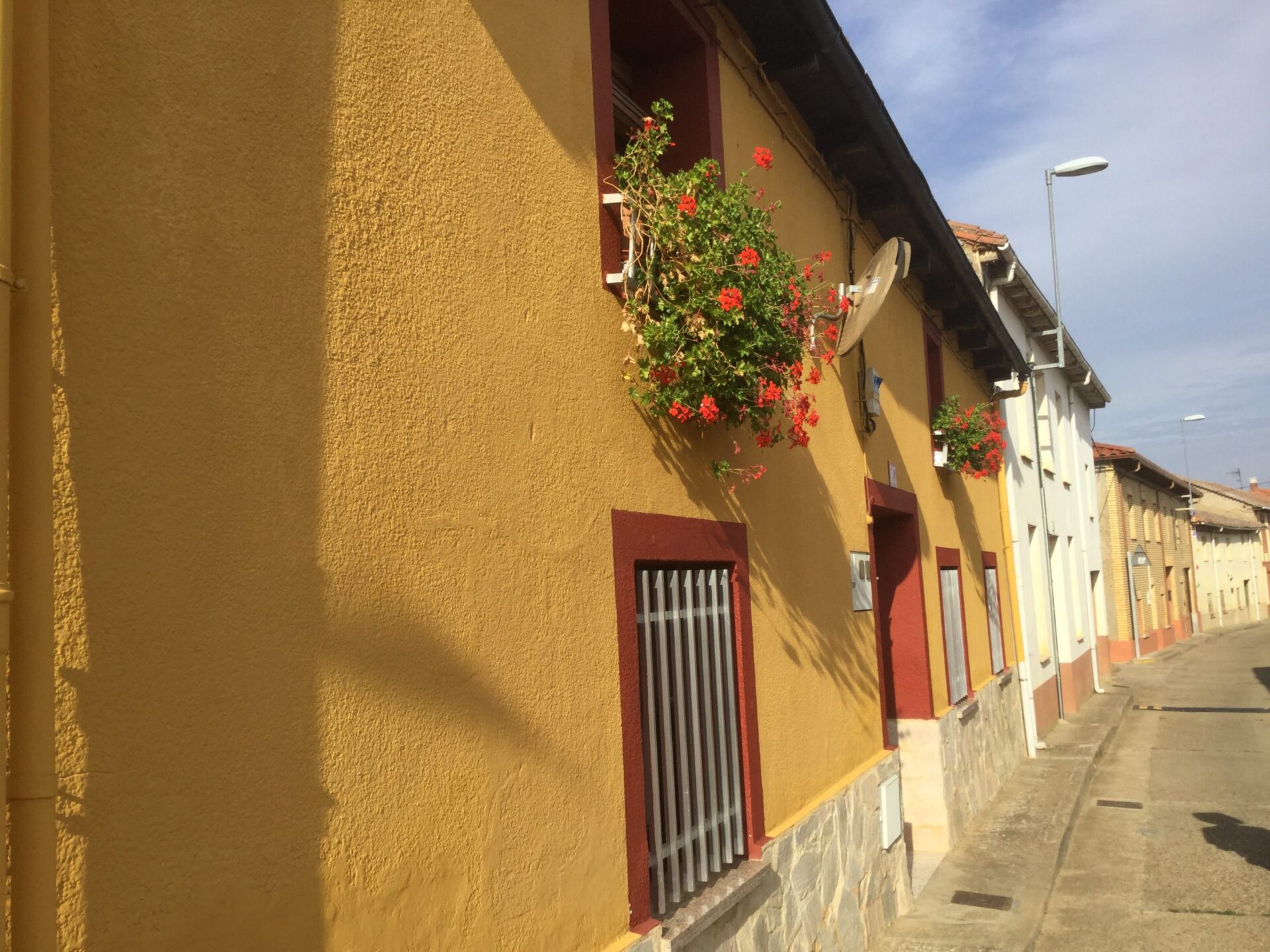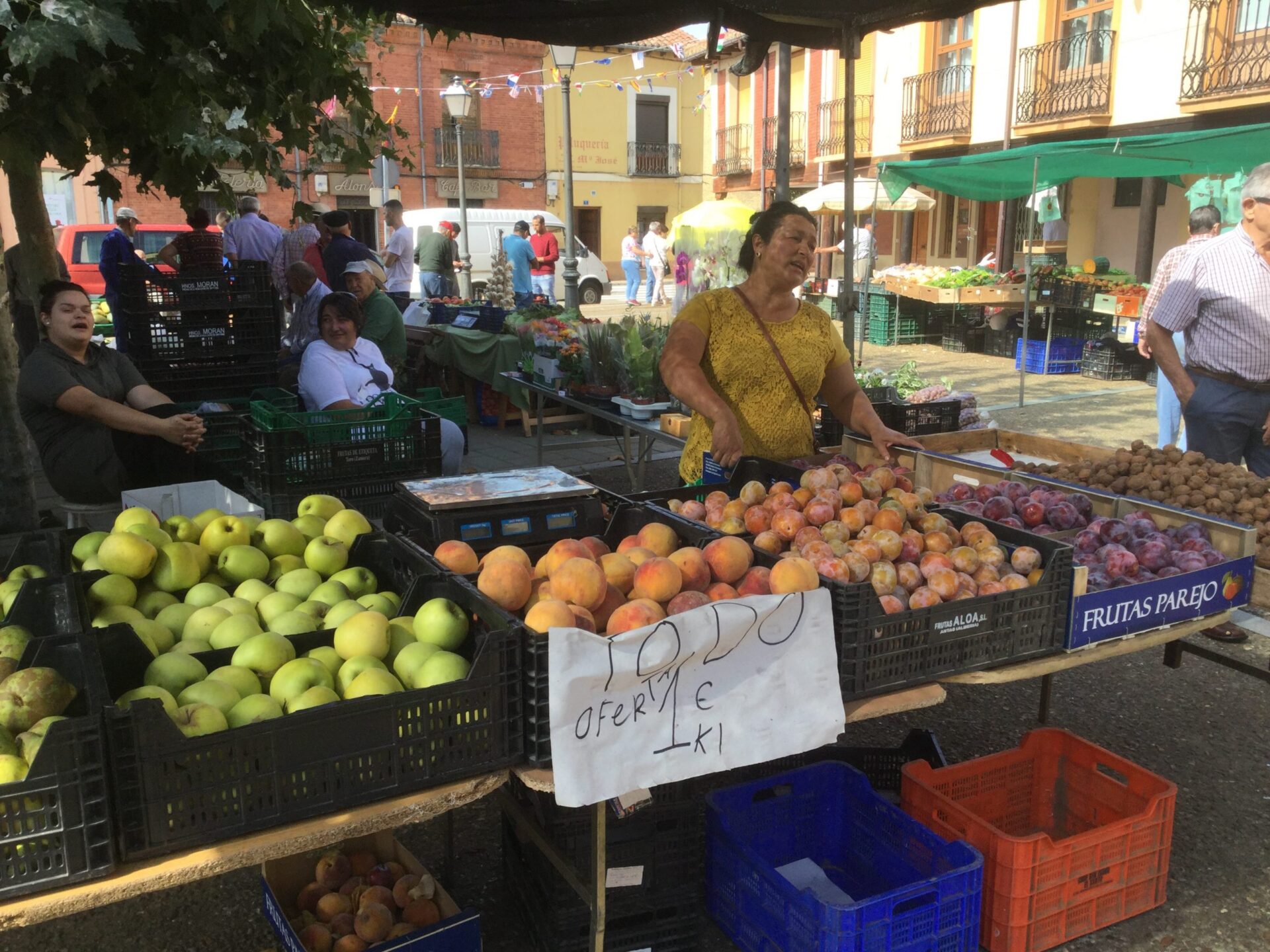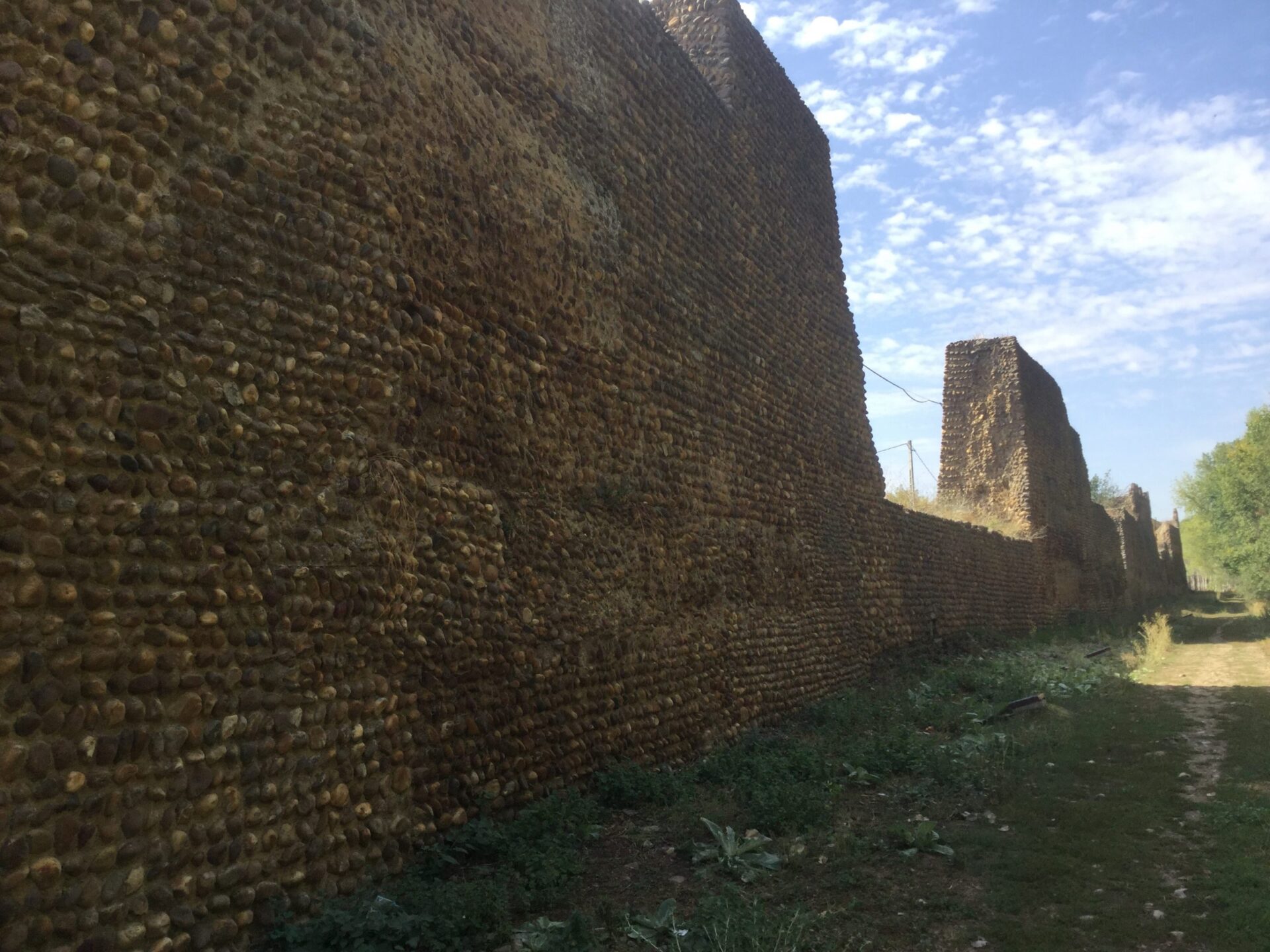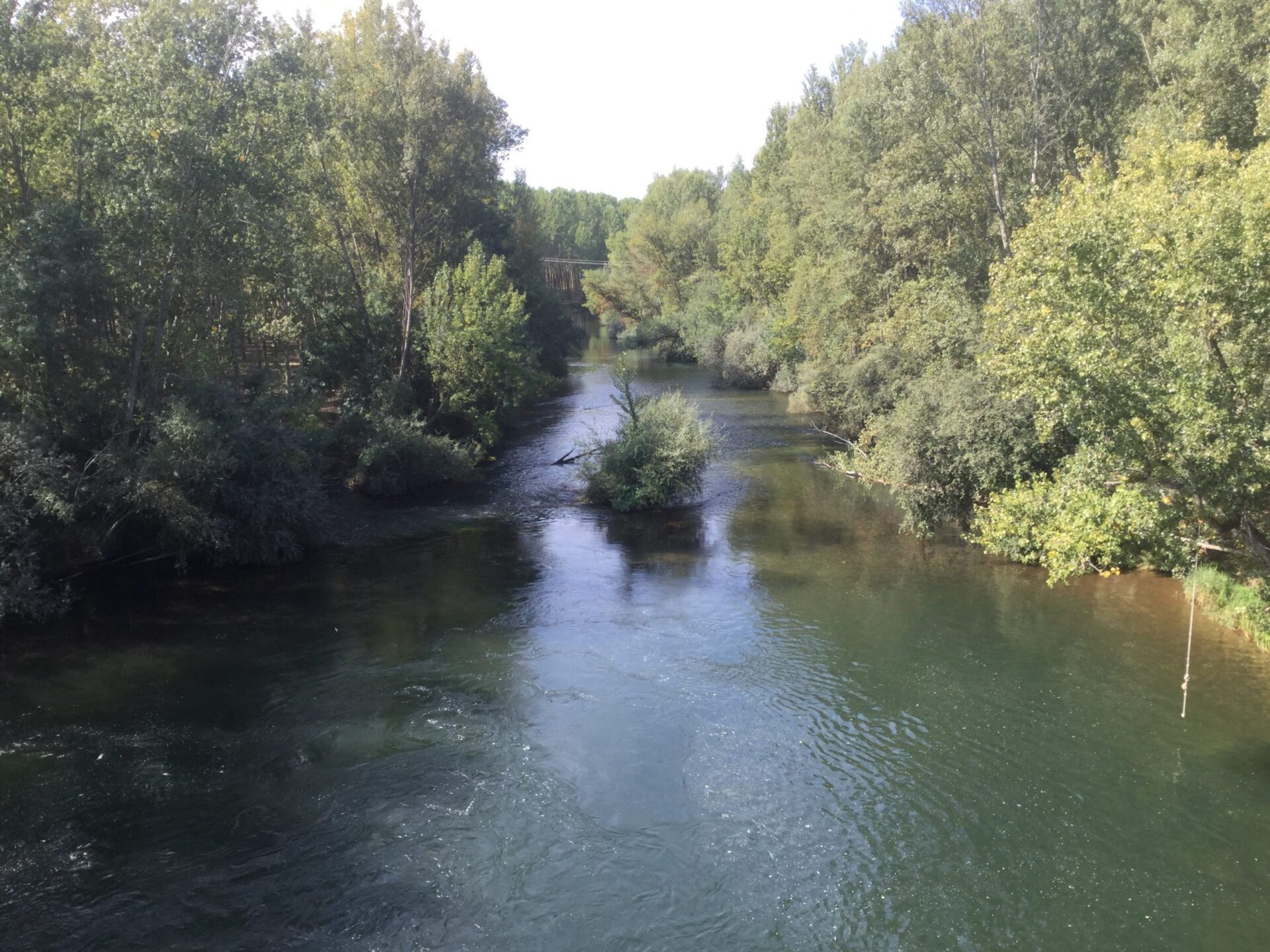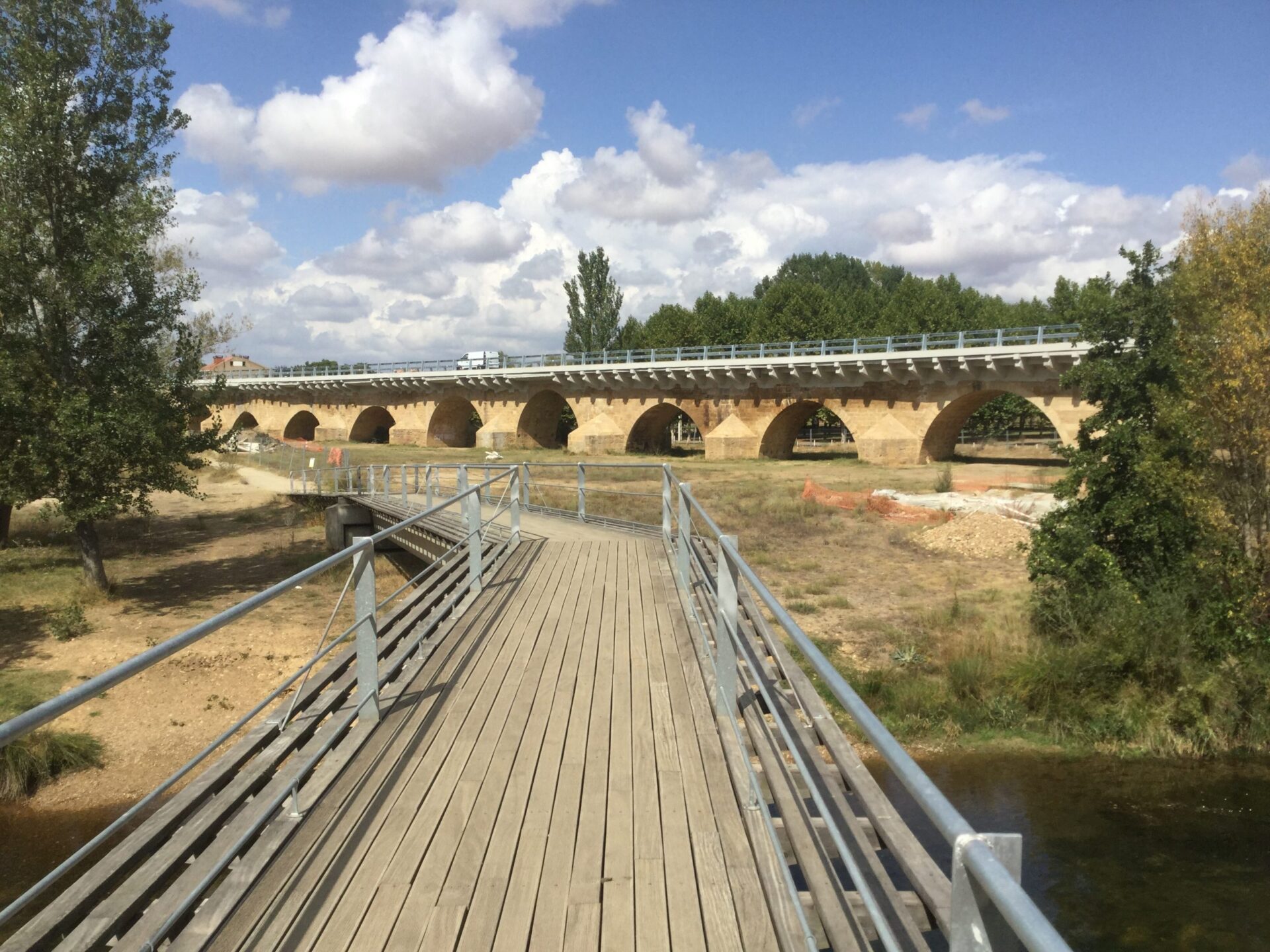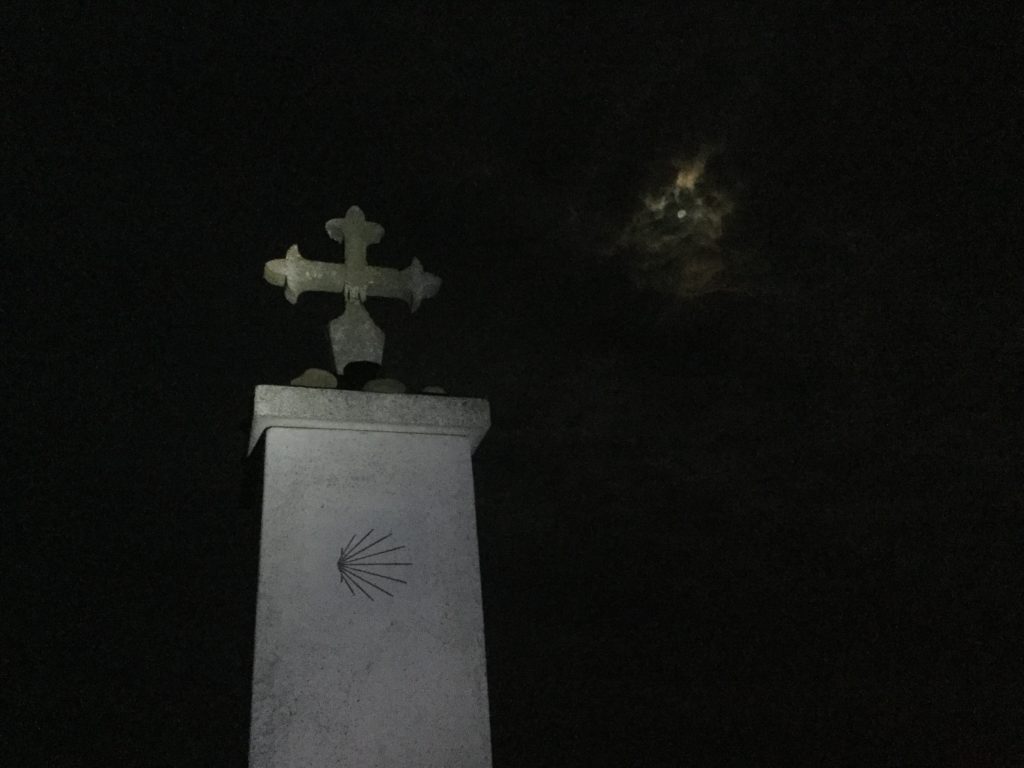The nicest of gestures
It was an interesting and varied walk today and mostly flat. At times I thought we could be back in Australia with the vast open fields of wheat stubble. But the wheat stubble was interrupted by paddocks of sunflowers in various stages of growth so I knew that I hadn’t been morphed back home.

A long section of the walk was on a path that paralleled the road. We stopped at Villalcazar de Sirga and sat outside at a bar in front of the church of Santa Maria la Blanca and ordered cafe con leches. It was then I saw and heard the Bibliobus drive past. I couldn’t resist and I followed it around the corner. It stopped just out of sight on the road near the church and I ventured inside telling them in English that in Australia I too had been a mobile library driver. They nodded and smiled at me and made me feel welcome but I don’t think they understood what I was saying.
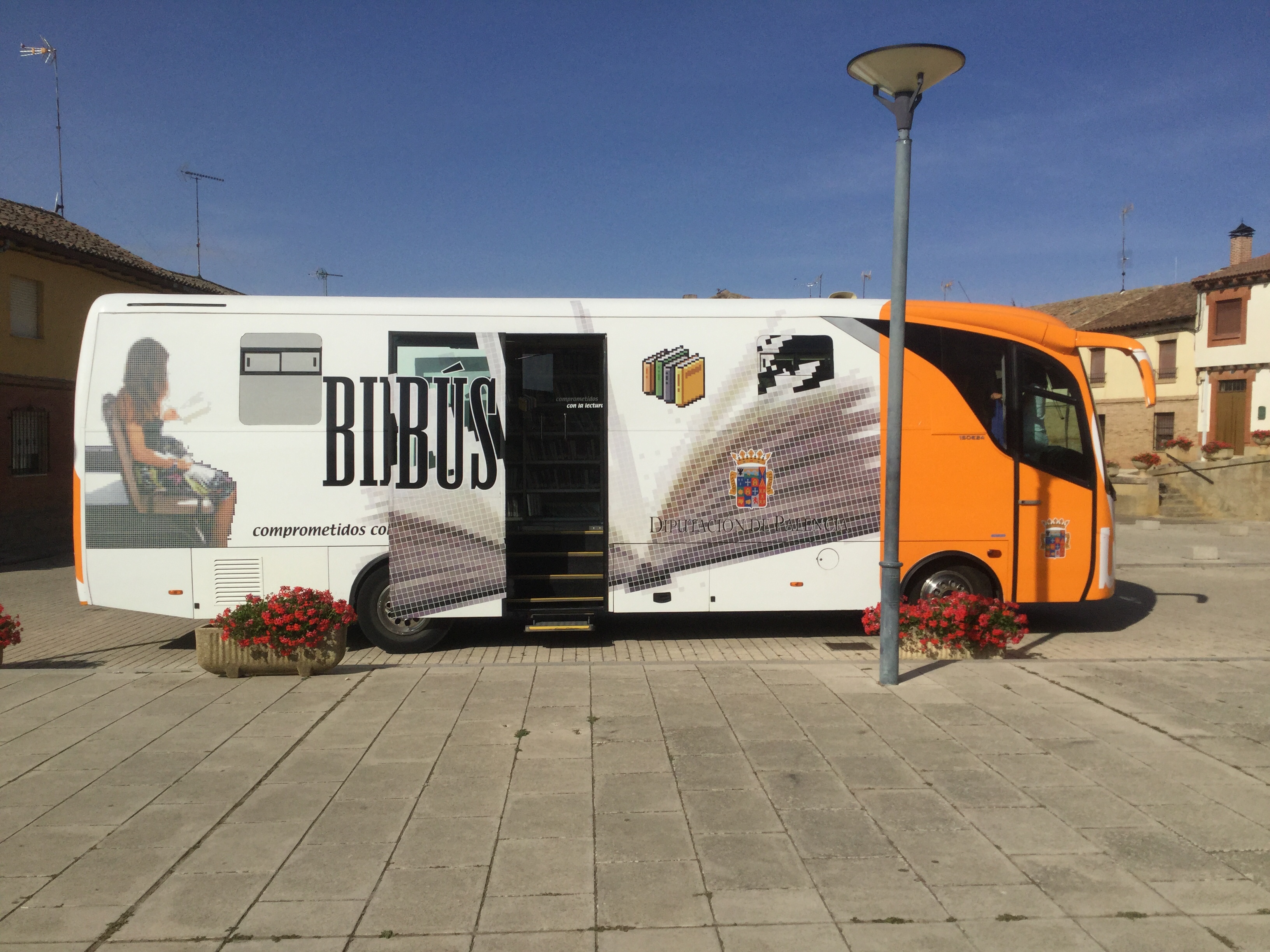
The church of Santa Maria la Blanca began at the end of the 12th century when the medieval name of the town was Villasirga. The temple-fortress was built by the Knights Templar who helped protect the pilgrims bound for the holy land.
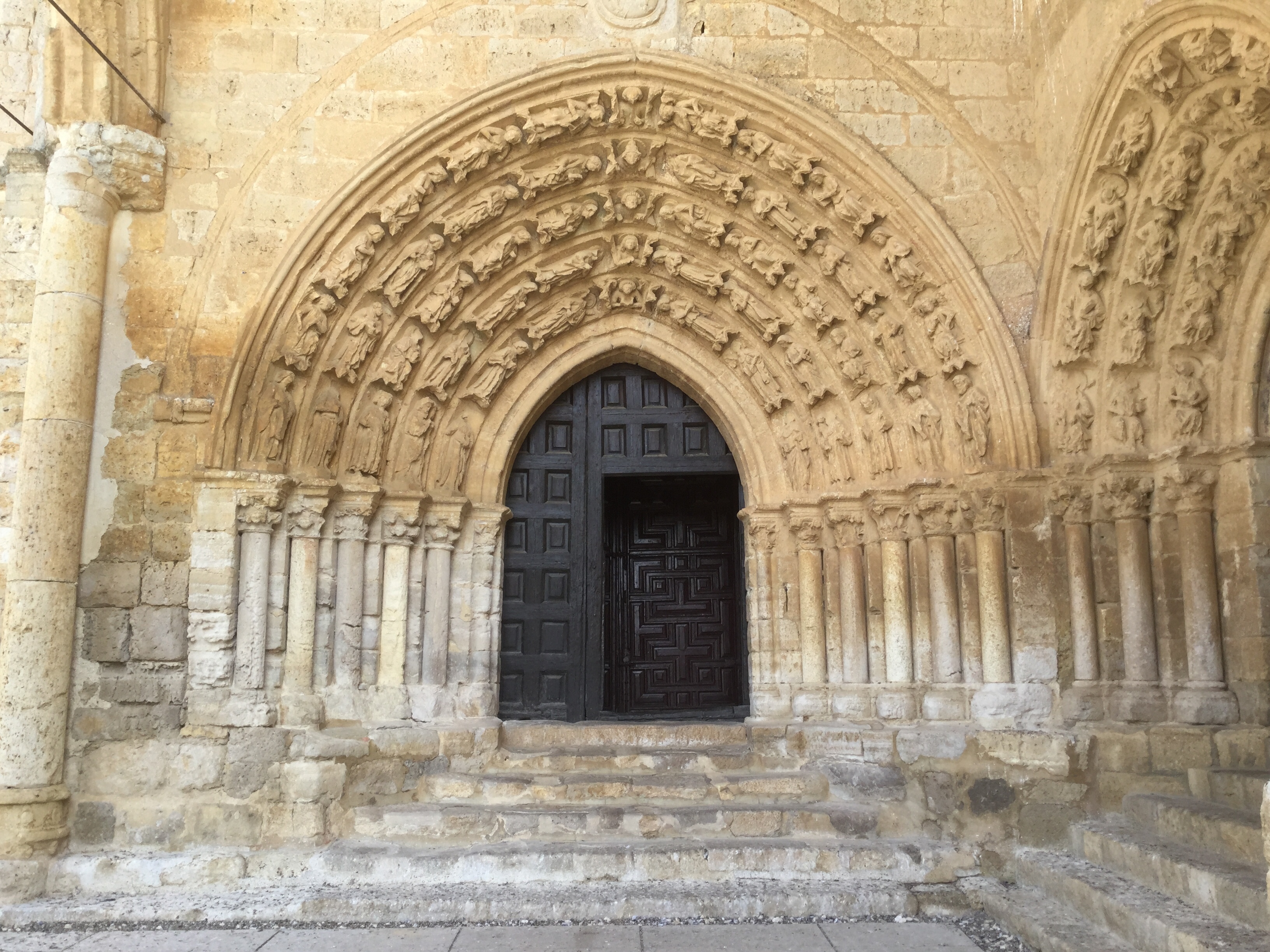
After visiting the biblibus and the Santa Maria church I needed a drink with a fellow pilgrim.
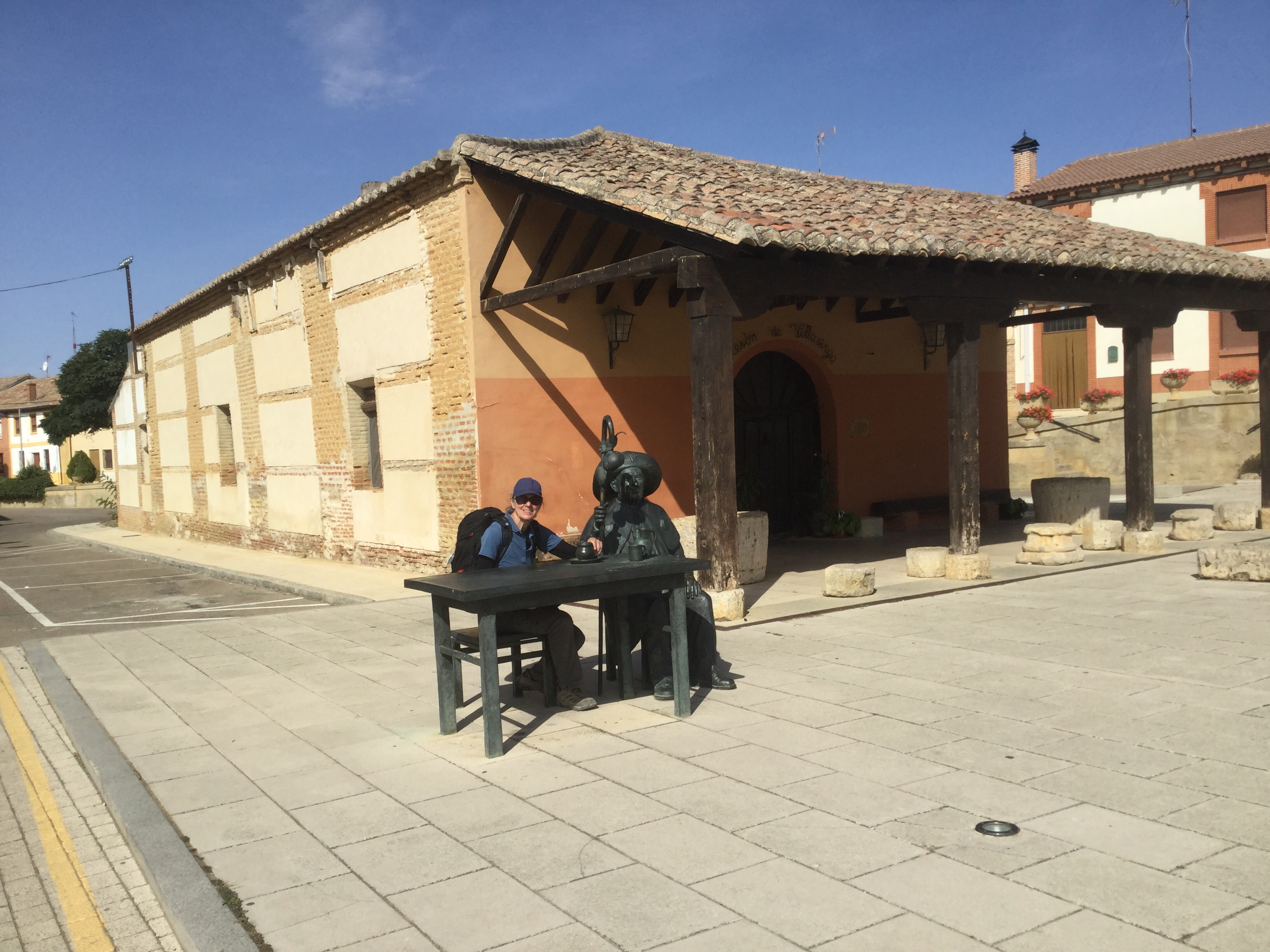
Interpreter Dave gave his stock reply to the tall pretty dark haired young girl that was waiting for me to acknowledge that she had spoken to me. Oh she won’t hear you she’s deaf. How do I say Buen Camino to her she asked. Interpreter Dave being a level one interpreter finger spelled it for her. She was lost after the first couple of letters. Is there a sign for Buen Camino she asked. He asked me and we thought about it for a few moments. Well Buen is Good and Camino can be represented by the letter C so, a good sign -fist closed thumb up- that flowed into the letter C. She liked that and signed me a Buen Camino and walked on. I was extremely touched.

Tonight we are staying at the Monostarie Santa Clara in Carrión de los Condes. There is a museum on the same site that contains many pieces of religious artwork.
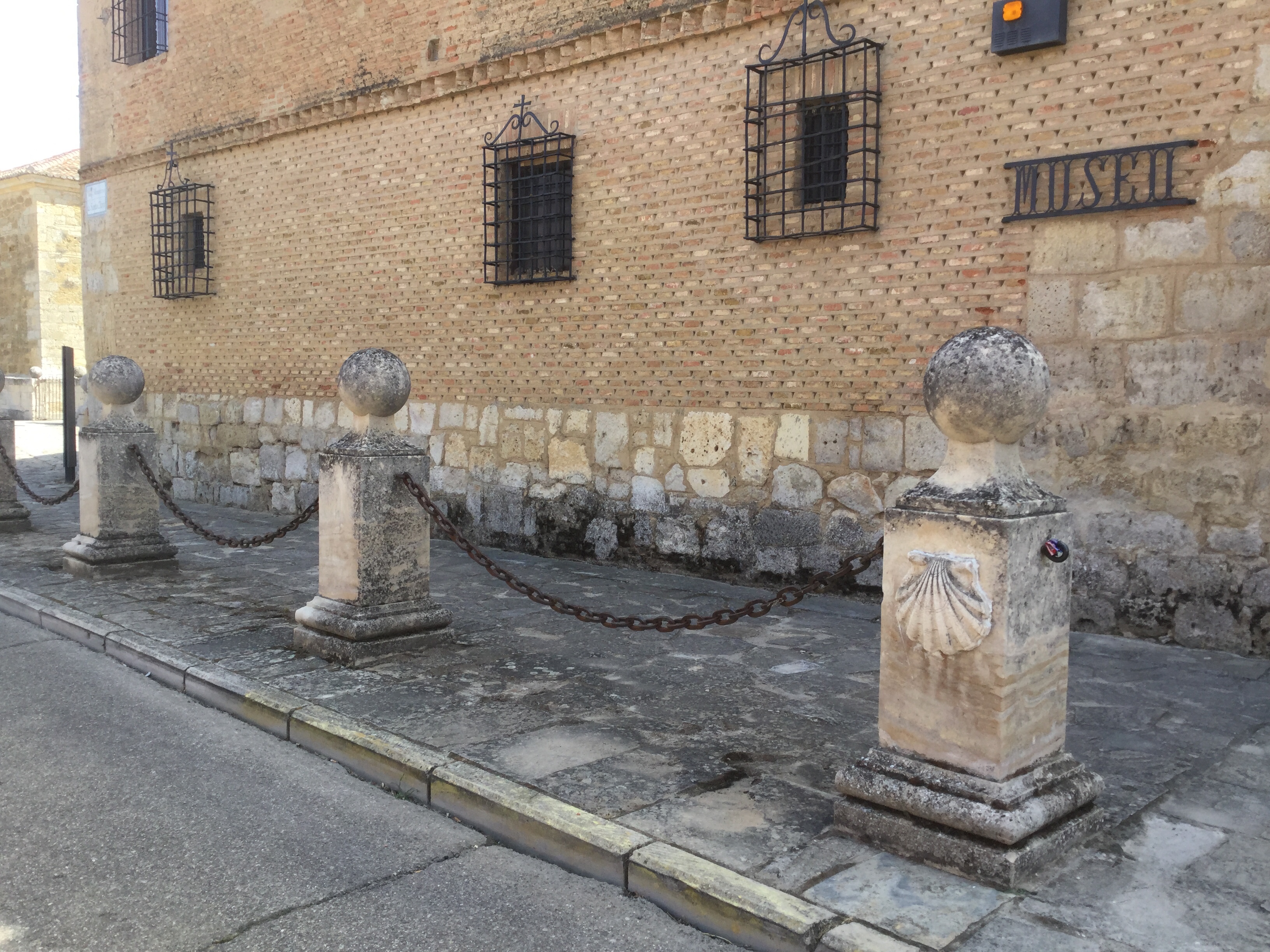
The town is interesting with a large portion of the city wall still in use. There are several old churches one dating back to 1126.

While catching up with friends in one of the many bars there was a local game of cards in progress. The players were happy to have an audience and explain the game. What was hard was getting used to the elaborately designed cards and the suits of swords, clubs, coins and cups.
